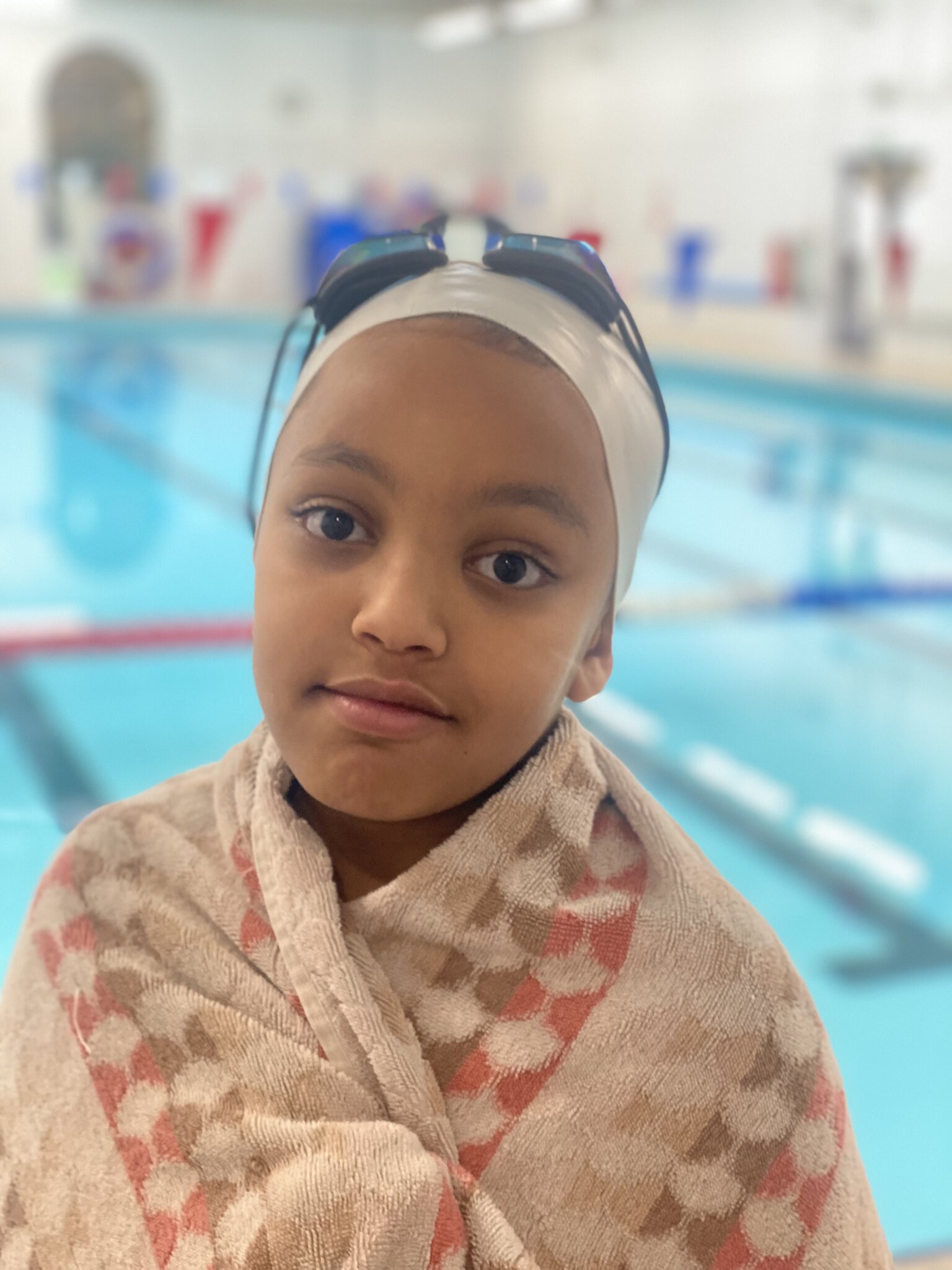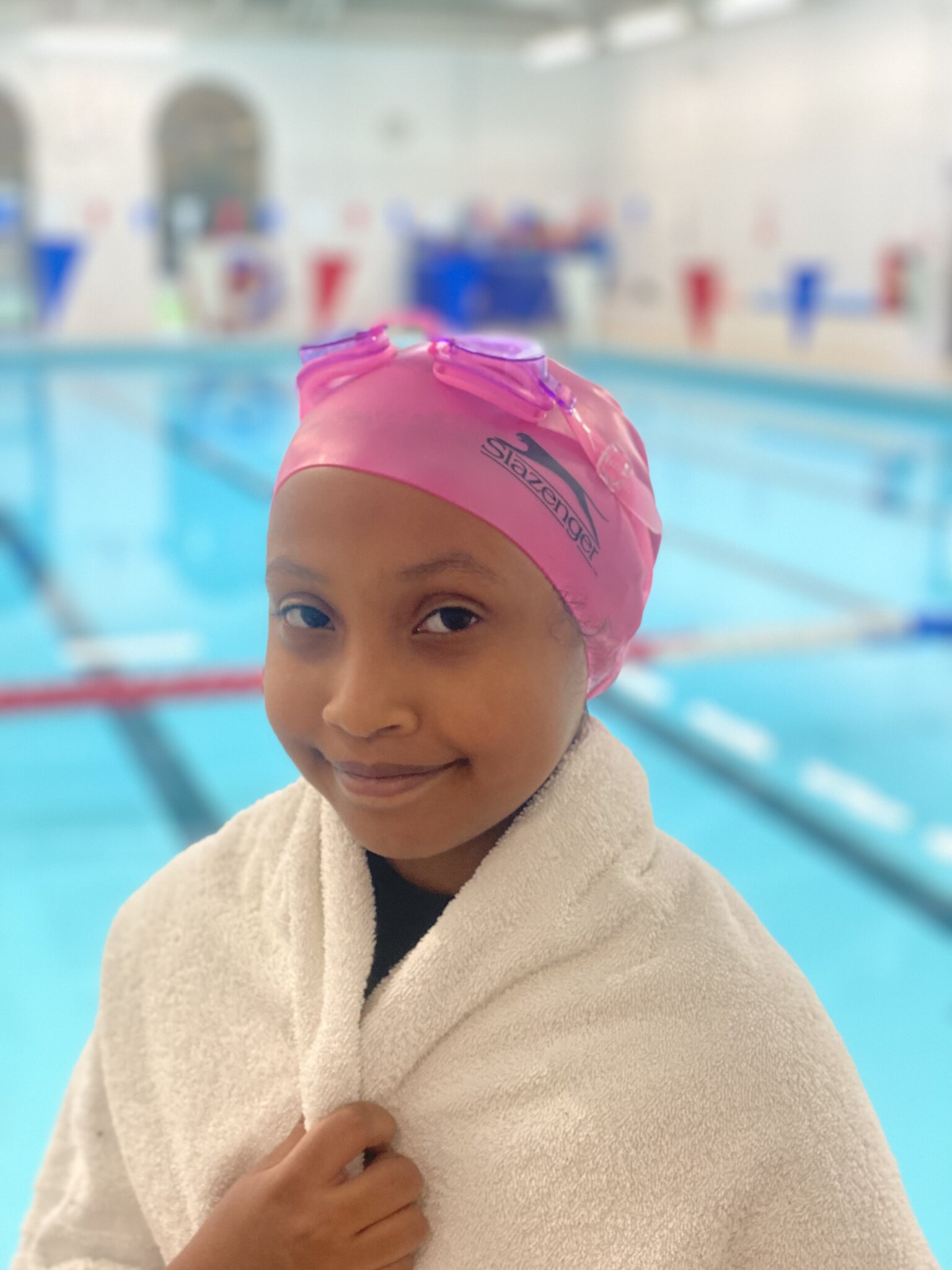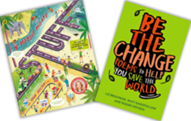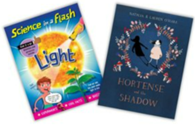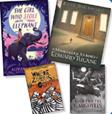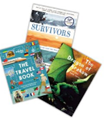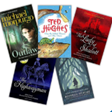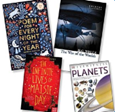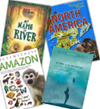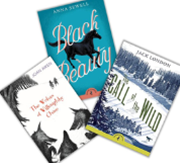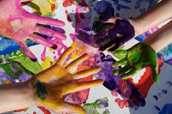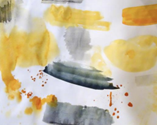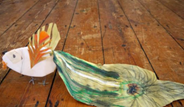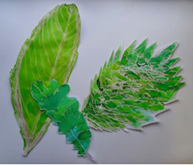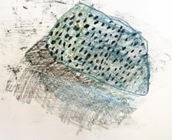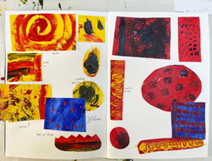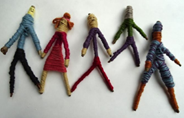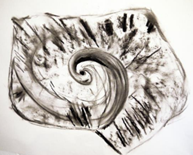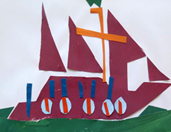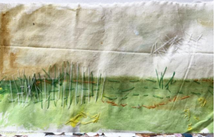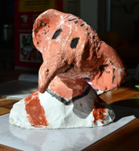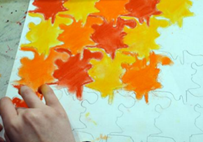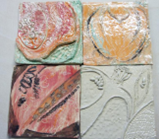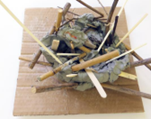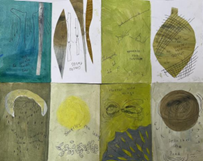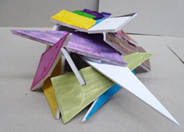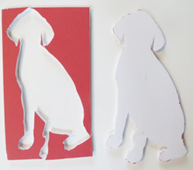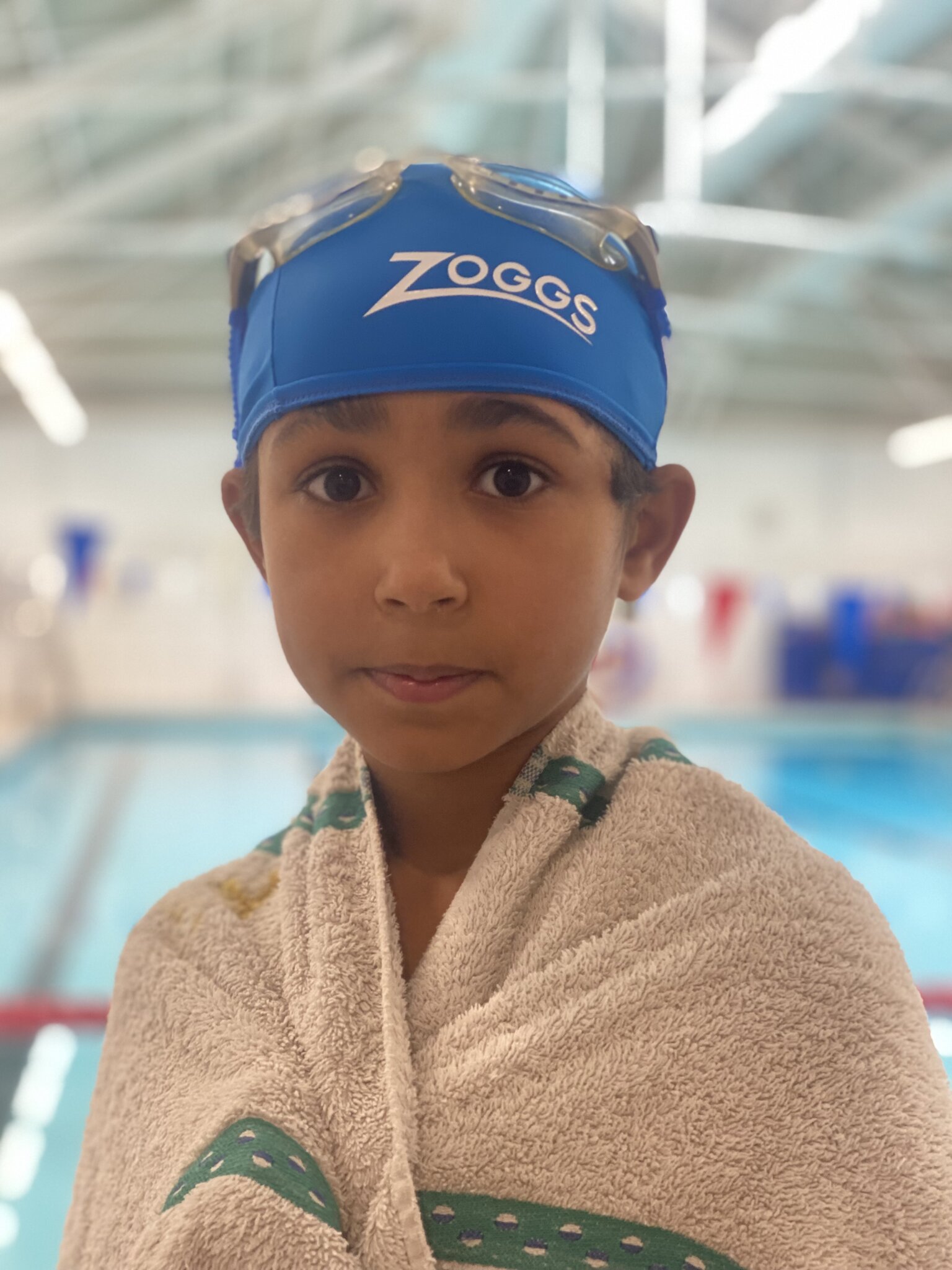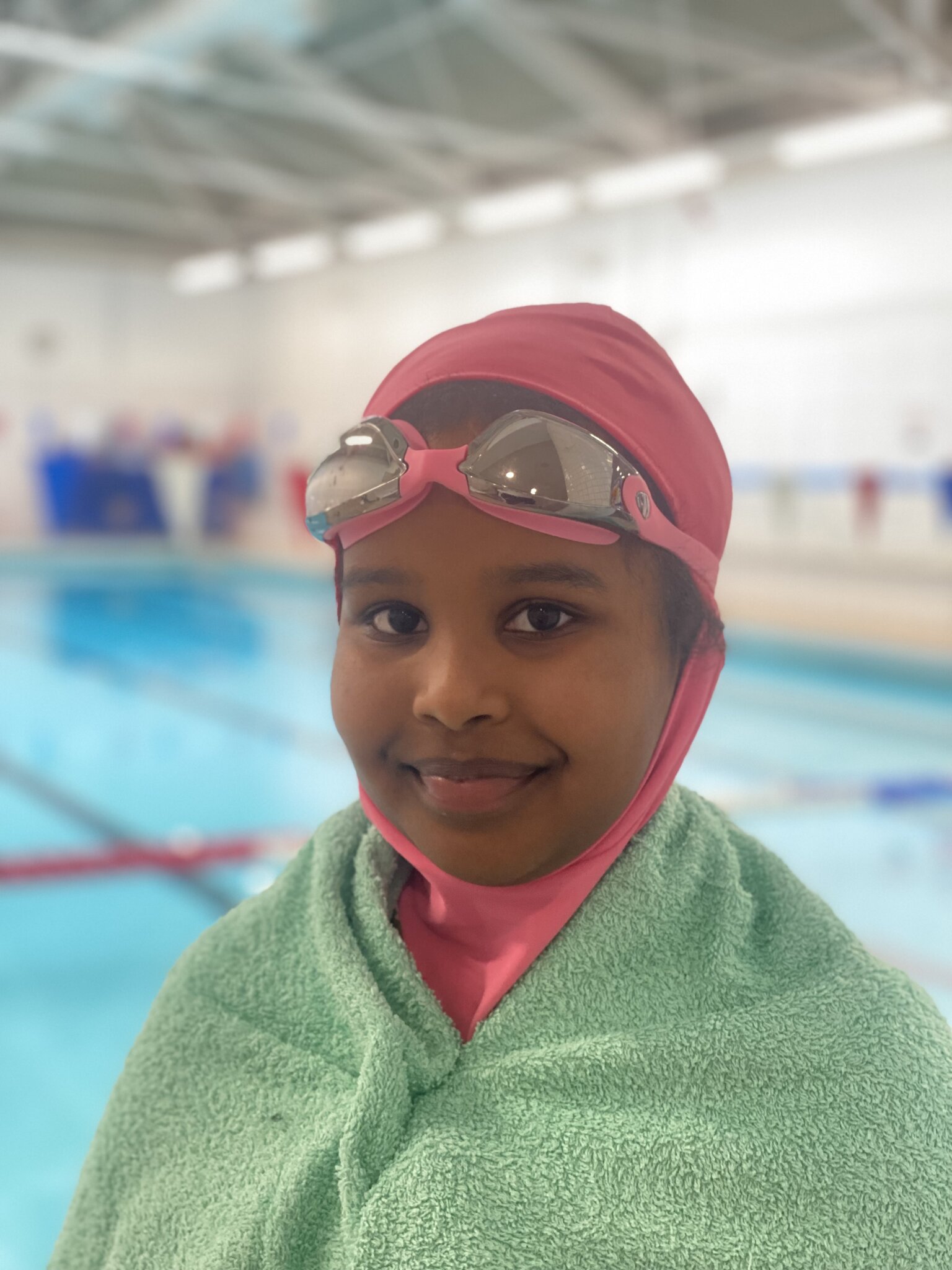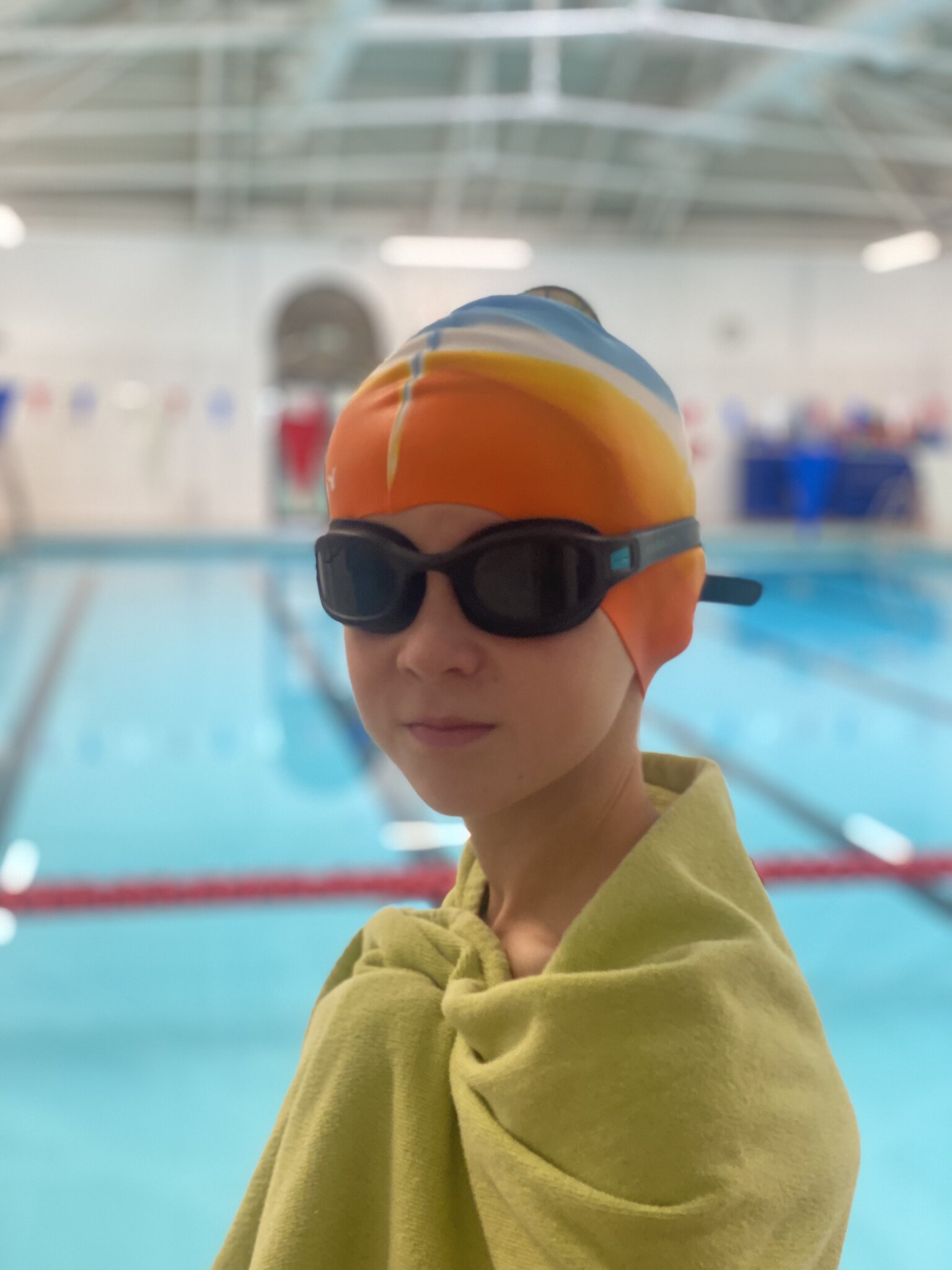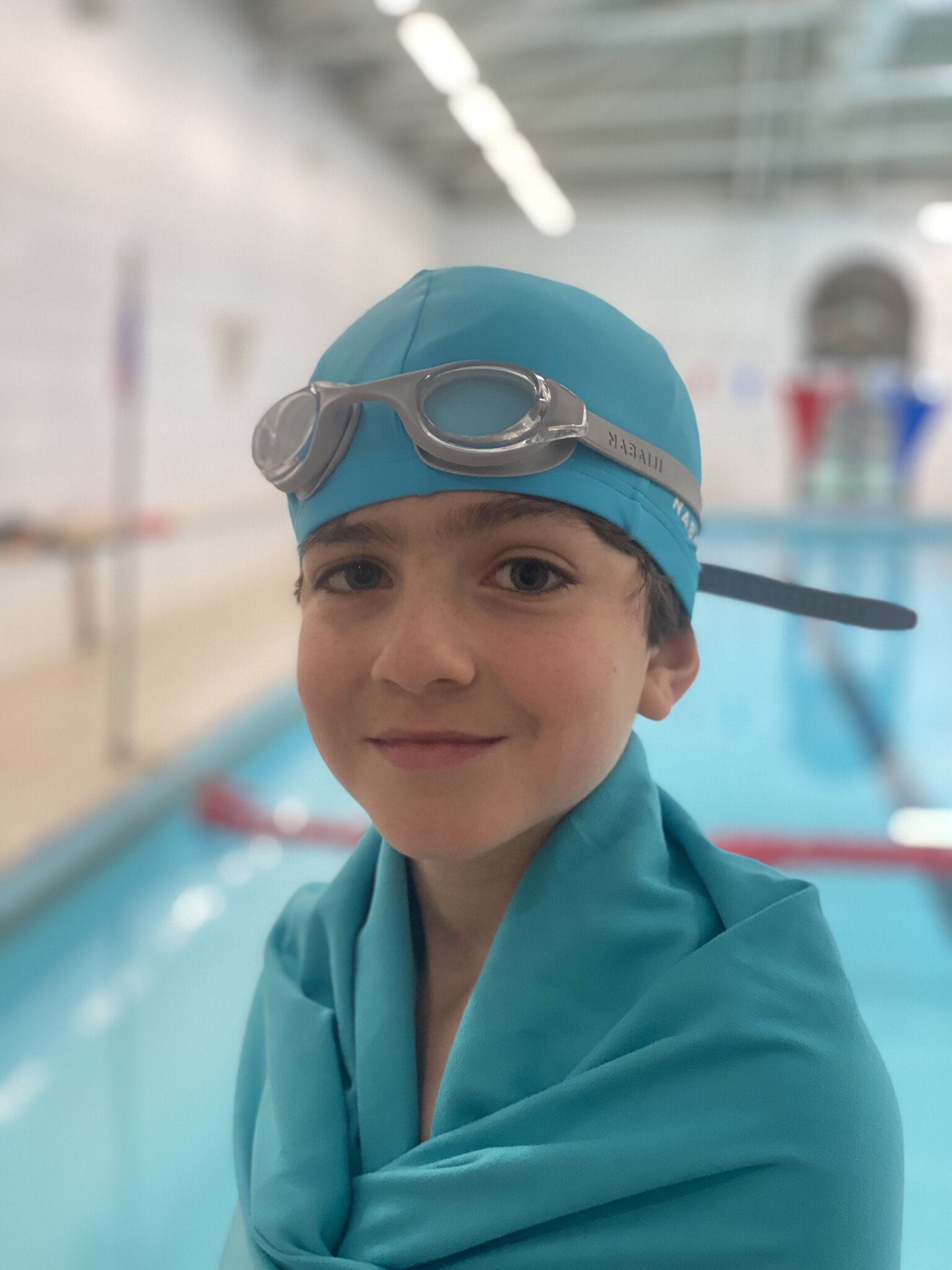The William Hogarth School Curriculum
Rationale and National Curriculum documents
Return to this tab after viewing a subject to minimize this section
Curriculum Overview
Our curriculum is at the heart of the children’s experience at The William Hogarth School. It is the substance and backbone of a William Hogarth School education, setting out:
- What we plan to teach
- What we intend the children to learn
The William Hogarth School curriculum is designed to bring our school vision and ethos to life by being well-rounded and inclusive, offering something for everyone. As curriculum architects, we have been ambitious in our intent to serve our whole school community, transforming lives and opening doors for all children, moving them beyond what is expected and helping them to discover what is truly possible. We know our learners better than anyone and are able to adjust and adapt our offer to help everyone experience success.
Our aim is for our curriculum to:
- Equip children with the knowledge, understanding and skills they need to make learning their own and to see themselves as lifelong learners
- Empower children to think for themselves, within a safe environment, so that they can find their own voice in the crowd.
All children at The William Hogarth School, enjoy the full National Curriculum.
We plan for progress in each subject, with progress maps showing the development of knowledge, understanding and skills. We also understand that a predictable part of learning is “forgetting” over time. To address this, we have identified the fundamental learning that children need to master during their time with us and, using research guidance, have embedded retrieval and low-stakes quizzing in our learning sequences to help children keep hold of these fundamentals. Our curriculum design means that teachers are able to take the children’s learning to considerable depth.
We treat fluency in Reading, Writing and Maths as critical building blocks to wider success. Securing functional skills in Early Years and Key Stage 1 helps us to unlock the door to broader opportunities in Key Stage 2 and we build on this by prioritising language play, storytime and mathematical reasoning. In this way, children experience delight and wonder in their learning.
With a highly mobile school cohort, we place great emphasis on vocabulary development within and alongside our curriculum. We know that tackling the vocabulary deficit is imperative if our children are to build a rich lexicon of words that will help them to organise their ideas, build connections and express themselves effectively.
The broader curriculum is built around individual subject disciplines. New learning is developed half-termly so that all children benefit from securing their knowledge, understanding and skills within each domain before moving on. For subjects with a large body of knowledge such as Science, History or Geography, children begin each half term with a ‘big question’ to explore. This anchors the learning, providing a clear focus and direction of travel; teachers segment the ‘big question’ into its core elements which children explore through the learning sequence. In this way, children are able to unify the learning and secure deeper understanding.
For some subjects such as Phonics, Maths and English, we have adopted published schemes with a strong evidence base unpinning them. These are the curriculum launchpad for learning, because they are well-sequenced, knowledge rich and sufficiently ambitious for our learners. Highly effective curriculum adaptation supports each child in embedding the knowledge and understanding needed to reach their potential, so that they can use and apply their learning in different contexts.
For other subjects, such as Cooking, Computing and Art, we have designed our own curriculum, drawing on the expertise of professional associations and using guidance to enhance our planning. These subjects are an essential ingredient of our inclusive curriculum, allowing children opportunities to transfer, embed and apply key knowledge, skills and understanding in meaningful contexts, as well as developing their language and fine motor skills.
Subjects, such as music, require particular expertise. As such, these are taught by specialists rather than class teachers. As an outward facing school, we are also keen to work with other specialists such as swimming or tennis coaches and Sports Impact who can add real value to our curriculum offer and the children’s learning experience.
Personal Development is carefully and explicitly planned for, with a progressive Learning 2 Lead curriculum model that is responsive and innovative. As a result, our learners benefit from a holistic learning experience of real quality. This approach widens horizons and offers a well-rounded educational experience that goes beyond what children might encounter day-to-day.
Please visit the links below to find out more about the curriculum we follow.
Introduction to Read, Write, Inc.: https://www.youtube.com/watch?v=-6dSsXkD1wM
Phonics: https://www.ruthmiskin.com/en/programmes/phonics/
Maths White Rose: https://whiterosemaths.com
Early Years Framework: https://www.gov.uk/government/publications/early-years-foundation-stage-framework--2
Early Years Development matters: https://www.gov.uk/government/publications/development-matters--2
KS2 History and Geography: https://www.pearsonschoolsandfecolleges.co.uk/primary/subjects/activehub-primary/history-and-geography
RE: https://discoveryschemeofwork.com/
Science: https://www.pzaz.online/
Computing: https://teachcomputing.org/
Please take the time to read our most recent Ofsted report.
Core Subjects
Return to this tab after viewing a subject to minimize this section
Maths Curriculum Overview
| Year | Autumn 1 | Autumn 2 | Spring 1 | Spring 1 | Summer 1 | Summer 2 |
|---|---|---|---|---|---|---|
| R | Getting to know you - Just like me! | it's me 1 2 3! - Light & dark | Alive in 5! - Growing 6 7 8 | Building 9 & 10 - consolidation | To 20 and beyond! - First, then, now | Find my pattern - On the move |
| 1 | Place Value (within 10) | Addition & Subtraction (within 10) - Shapes | Place value + Addition & subtraction (within 20) | Place value (within 50) - length + height - Mass + volume | Multiplication & Division - Fractions - Position & direction | Place value (within 100) - Money - Time |
| Year | Autumn 1 | Autumn 2 | Spring 1 | Spring 1 | Summer 1 | Summer 2 |
|---|---|---|---|---|---|---|
| 3 | Place Value - Addition & Subtraction | Multiplication & Division | Multiplication & Division - Length & perimeter | Fractions - Mass & Capacity | Fractions - Money - Time | Shape - Statistics |
| 4 | Place Value - Addition & Subtraction | Multiplication & Division - Area | Multiplication & Division - Length & perimeter | Fractions - Decimals | Decimals - Money - Time | Shape - Statistics - Position & Direction |
| Year | Autumn 1 | Autumn 2 | Spring 1 | Spring 1 | Summer 1 | Summer 2 |
|---|---|---|---|---|---|---|
| 5 | Place Value - Addition & Subtraction | Multiplication & Division - Fractions | Multiplication & Division - Fractions | Decimals & Percentages - Permiter & Area - Statistics | Shape - Position & Direction - Decimals | Negative numbers - converting units - Measurement / Volume |
| 6 | Place Value - Addition, Subtraction - Multiplication & Division | Fractions A and B - Converting units | Ration - Algebra - Decimals | Fractions, Decimals & Percentage - Area & Perimeter - Statistics | Shape - Geometry - Position & Direction | Themed projects - problem solving |
Maths Curriculum
Intent
Our maths curriculum is an ambitious mastery approach to maths which is accessible for all pupils. It develops children’s fluency, mathematical reasoning and problem-solving skills.
“Mathematics is a creative and highly inter-connected discipline that has been developed over centuries, providing the solution to some of history’s most intriguing problems. It is essential to everyday life, critical to science, technology and engineering, and necessary for financial literacy and most forms of employment. A high-quality mathematics education therefore provides a foundation for understanding the world, the ability to reason mathematically, an appreciation of the beauty and power of mathematics, and a sense of enjoyment and curiosity about the subject.” - National Curriculum 2014
At the William Hogarth, our maths teaching and learning resonates with this statement. We fully appreciate the contribution of mathematics to everyday life and society. Equally, we value the contribution of mathematics in other areas of the curriculum and in promoting children’s curiosity, enjoyment of learning and intellectual development.
William Hogarth Mathematicians:
- enjoy the maths they are taught;
- notice and appreciate maths in the world around them;
- have a positive attitude towards learning maths and expect to be successful;
- acquire a strong fluency in basic number facts and procedures;
- calculate using a range of strategies, choosing the most efficient methods;
- talk and reason about their understanding, using precise mathematical language;
- identify underlying structures, patterns and relationships;
- approach problems with resilience and creativity;
- have a deep conceptual understanding, representing key ideas in diverse ways and appreciating connections between different areas of the curriculum;
- develop both decision making and logical thinking;
- apply and develop their mathematical understanding and knowledge in all other areas of the curriculum;
- work both collaboratively and independently.
Implementation
We are a maths mastery school and we are part of the local NCETM hub. A teaching for mastery approach is used throughout the school, based on the National Centre for Excellence in the Teaching of Mathematics’ (NCETM) “Five Big Ideas”, first published in 2017. Further information about the Five Big Ideas (coherence, variation, fluency, mathematical thinking and representation and structure) can be found on the NCETM’s website https://www.ncetm.org.uk

We are also a data-informed school. This means we use data precisely and forensically to diagnose what children need to learn. Formative and summative data analysis are used to target our mathematics curriculum highly effectively to meet children’s individual learning needs. This ensures that every child leaves our school with a confident grasp of mathematics, having experienced a varied and rounded mathematical curriculum.
We employ three core teaching strategies to support our children’s progress in mathematics:
- Concrete learning – the use of physical resources to expose the inner structures of mathematical concepts. This supports children in ascribing value and meaning to numbers and mathematical processes, and clarifies more abstract concepts
- Pictorial learning – the use of diagrams and images to visually represent a mathematical idea or concept and to clarify and represent more abstract concepts
- Abstract learning – the use of numbers, symbols and operations in mathematics. As children progress through their mathematical education, they move towards increasingly formal abstract methods.
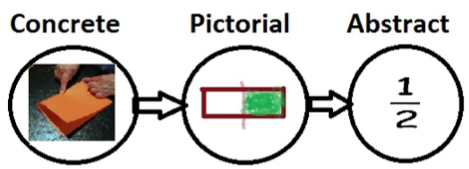
Impact

Children’s place value knowledge is secured through the use of place value cards, counters and charts.

Children use tens frames in early years to support counting, recognising and understanding the composition of numbers.

Following the CPA approach children first experience grouping with place value counters to gain conceptual understanding.

Children draw diagrams to show understanding of concepts.

Children practically sort, group and order objects using key vocabulary.

Concrete objects used to expose the inner structures of mathematics.

As pupil’s move towards KS2 and UKS2, their reasoning and use of key vocabulary becomes increasingly sophisticated.

Mathematical skills, such as measurement, feature heavily in our STEM learning.

In this activity children created models of 3D shapes to consolidate their learning and describe the different properties attributed to each shape.

Working models are displayed which scaffold children’s problem solving.

Our maths environments display key vocabulary and stem sentences.

Working walls are easily visible and include key visuals and manipulatives.
The overarching aim for English in the national curriculum is to promote high standards of language and literacy by equipping children with a strong command of the spoken and written language, and to develop their love of literature through widespread reading for enjoyment.
Reading Curriculum Overview
| Year | Autumn 1 | Autumn 2 | Spring 1 | Spring 2 | Summer 1 | Summer 2 |
|---|---|---|---|---|---|---|
| EYS |
Friendship & Animals
|
Stars & Space
|
Superheros
|
Traditional Tales
|
Growing
|
Seaside
|
| Humanities | Transition | Locality (Geograhy) | Living Memory (History) | Environment (Geography) | Travel and Transport (History) | Weather and Fieldwork (Geography) |
| Science | Everyday materials, seasonal change | Everyday materials, seasonal change | Animals inc. Humans, seasonal change | Animals inc. Humans, seasonal change | Plants, seasonal change | Plants, seasonal change |
| 1 |
History - Living Memory
|
Geography - Locality
|
Living Memory
|
Animals (Science)
|
Traditional Tales & Poetry
|
Stories & Poems
|
| Humanities | Chiswick History | Local area (Chiswick) | The Great Fire of London | Hot and Cold Places | Pocahontas | Comparing Countries of the UK |
| Science | Light | Space | Human lifestyle | Habitats | Changing materials | Mixing and Making |
| 2 |
Stories, Plays and Poetry - Contemporary
|
Fairy Stories & Poetry - Classics
|
History - Events, Beyond Living Memory, Great Fire of London
|
Science - Living Things, Habitats, Plants
|
Traditional tales & Poetry - Contemporary
|
Geography - UK, Rivers & Seas
|
| Year | Autumn 1 | Autumn 2 | Spring 1 | Spring 2 | Summer 1 | Summer 2 |
|---|---|---|---|---|---|---|
| Humanities | Prehistoric Britain | Villages, towns and cities | Shang Dynasty | Mountains, Volcanoes & Earthquakes | Ancient Greece | Water and Weather |
| Science | Animals inc. Humans | Rocks | Rocks | Forces | Light | Plants |
| 3 |
Reading depth: Stories and Poetry
|
Fairy Stories and Poetry
|
Forces, Magnets and Rocks
|
Science - Mountains and Rivers
|
Light and Environment - Poetry
|
Stories, Plays & Poetry
|
| Roman Britain | Rivers | Anglo Saxons & Scots | Migration | Vikings | Natural Resources - Northern Chile | |
| Animals inc Humans - The digestive system | Electricity | States of Matter | States of Matter | Living things and their habitats | Sound | |
| 4 |
Science - Living things & Habitats
|
Stories and Poetry - Different Forms
|
Myths and Legends - Different forms
|
Geography - Europe
|
Vikings
|
Stories, Plays & Poetry - Different Forms
|
| Year | Autumn 1 | Autumn 2 | Spring 1 | Spring 2 | Summer 1 | Summer 2 |
|---|---|---|---|---|---|---|
| Humanities | The Kingdom of Benin | Slums | Medieval Monarchs | Biomes | Changing Britain | Energy and Sustainability |
| Science | Forces | Forces | Properties and change of materials | Properties and change of materials | Space | Living Things |
| 5 |
Other cultures & traditions / poetry - Wider Range
|
History - Victorians
|
Modern Fiction & Poetry - Wider Range
|
Myths & Legends & Poetry - Wider Range
|
Science - Space
|
Geography - North & South America / The World
|
| Humanities | Industrial Revolution | Local Fieldwork | Civil Rights | Population | Twentieth Century Conflict | Globalisation |
| Science | Animals inc. Humans | Electricity and Light | Living things and Habitats | Evolution | Sustainability | Evolution |
| 6 |
Modern Fiction and Poetry - Wider Range
|
Geography - Coasts
|
Literary Heritage - Plays and Poetry - Wider Range
|
Science - Evolution and Inheritance
|
History - War
|
Traditional Tales and Poetry - Wider Range
|
English National Curriculum programme of study
Intent
Reading lies at the heart of the curriculum at The William Hogarth. We are dedicated to enabling our children to become lifelong readers and we believe reading is key for academic success.
As a result, our children are given the best opportunity to achieve outstanding progress in reading.
We also understand how important it is for our children to enjoy reading. We have therefore put together a carefully crafted curriculum to ensure that the reading journey our children take with us is a successful one, which builds on reading skills, fluency and correctly identifies children’s reading ages. This helps to target children when needed and prepares them for the next stage in their education; this includes fostering a love of reading which will take them through their adult life.
Implementation
-
Planners are used as a regular form of communication where children and parents are encouraged to record reading experiences.
-
Children take part in daily comprehension lessons, where they are exposed to an increasingly complex range of different texts and can demonstrate and apply their understanding and thinking behind these.
-
We have an excellent library and a wide range of reading books in every classroom, which cater for children at all different levels of their reading.
-
We encourage the reading of classics and contemporary.
-
All children choose a reading book to take home and this reading book is changed frequently (Each year group have set expectations)
-
Each classroom has a selection of books, which are directly linked to the class topic. This offers opportunities for children to apply their reading skills across the curriculum.
-
The class teacher reads each day to children. This can be a book that the teacher recommends to the class or a recommendation from a child.
-
Children are listened to at least once a week and discussions around reading take place.
-
Daily discreet teaching of phonics and early reading is supported by RWI.
-
Parents are encouraged to listen to their child read every day and to read stories aloud as much as possible.
-
Reading challenges and poetry competitions are a regular feature of the school year with identified recommended reading lists for each year group.
-
We encourage a love of reading through author visits, library visits, access to a range of text whilst children learn their reading skills and become fluent throughout the school
-
We regularly assess children’s comprehension skills and reading ages to identify and target support when needed. For example: - PiXL.
-
We encourage regular communication through the use of a planner where students and parents are encouraged to reflect on the reading.
Impact
We ensure that William Hogarth Readers, are highly competent and fluent readers who can recommend books to others as well as demonstrating a love for reading. They will also have a thirst for reading a range of text genres including poetry, fiction and non-fiction texts. Our children will be able to debate and discuss an author’s work, their use of language and the impact this has on the reader. William Hogarth Readers are expected to choose and read books that will challenge their reading experiences. Which will enable them to achieve outcomes at least in line with their peers nationally. It is our expectation that the children of our school will seek opportunities to communicate their research to an audience including peers, adults and the wider community.
https://www.gov.uk/government/publications/national-curriculum-in-england-english-programmes-of-study/national-curriculum-in-england-english-programmes-of-study#:~:text=Aims,through%20widespread%20reading%20for%20enjoyment.
|
Teachers use prosody to model how to read with fluency and expression. |
|
|



|
Stories are put into a context to aid understanding. |


Children become fluent readers with support.
|
Children are exposed to a love for reading by adults. |



Partner reading supports children’s development of sharing stories.
Exposure to different genres and comprehension skills in order to understand key skills.
Reading Challenge
Read, Write, Inc.
The overarching aim for English in the national curriculum is to promote high standards of language and literacy by equipping childrenwith a strong command of the spoken and written language, and to develop their love of literature through widespread reading for enjoyment. (National Curriculum)
Writing Curriculum Overview
| Year | Autumn 1 | Autumn 2 | Spring 1 | Spring 2 | Summer 1 | Summer 2 |
|---|---|---|---|---|---|---|
| Stimulus Text |  |
.jpg) |
 |
 |
 |
 |
| Genre | Discovery: Narrative tale | Narrative: Traditional Tale | Narrative: Portal Story | Narrative: Detective Story | Narrative: Hunting Story | Narrative: A Return Story |
| Learning Intention | Recount: Messages | Instructions: How to catch a witch | Information text | Letters: Recount | Instructions: Recipe | Recount: Postcard |
| Humanities | Transition | Locality | Living Memory (Linked to Reading Curriculum) | Environment | Travel and Transport | Weather & Fieldwork |
| Cross Curricular Writing |
| Year | Autumn 1 | Autumn 2 | Spring 1 | Spring 2 | Summer 1 | Summer 2 |
|---|---|---|---|---|---|---|
| Stimulus Text |  |
 |
 |
 |
 |
 |
| Genre | Narrative: Return | Narrative: Settings | Narrative: Twist | Narrative: Circular | Narrative: A mistake | Narrative: Finding |
| Learning Intention | Information: Jungle Animals | Recount: Diary | Persuasion: Letters | Recount: Letter | Information: How to be a Regal Leader | Instructions: How to Build a Habitat |
| Humanities | Land Ahoy! | Street Detectives | Great Fire of London | Flow | Chiswick History | Chiswick Geography |
| Cross Curricular Writing | Black History Month | Haiku Poetry: Bonfire Night | Recount: The Enormous Turnip | Poetry: Spring / River | Instruction: How to make a disgusting sandwich | Complaint: About a disgusting sandwich |
| Year | Autumn 1 | Autumn 2 | Spring 1 | Spring 2 | Summer 1 | Summer 2 |
|---|---|---|---|---|---|---|
| Stimulus Text |  |
 |
 |
 |
 |
 |
| Genre | Narrative: Return | Narrative: Approach Threat | Narrative: Fable | Narrative: Character | Narrative: Lost Narrative | Narrative: Settings |
| Learning Intention | Information: Explanation (How to Capture the Iron Man) | Information: Report | Information: Information leaflet | Information: Letters (recount) | Information: Instructions (How to be a mischievous child) | Information: Newspaper report |
| Humanities | Prehistoric Britain | Where People Live | Shang Dynasty | Volcanoes and Earthquakes | Ancient Greece | Weather in the UK |
| Cross Curricular Writing | Information Text (expository / description) PEARSON: What were the major differences between the different eras of the Stone Age? |
Information Text (expository / description) PEARSON: ‘There are more advantages to living in a city than disadvantages.’ Do you agree? |
Information Text (expository / description) PEARSON: What do we know about the Shang Dynasty? |
Information Text (explanation / cause & effect) PEARSON: Imagine you are in charge of a town. How would you plan for a volcanic eruption? |
Information Text (expository / description) PEARSON: Describe two ideas from Ancient Greece that have lasted to the modern day. What are the differences between then and now? | Information Text (explanation / cause & effect) PEARSON: Why does it rain? |
| Year | Autumn 1 | Autumn 2 | Spring 1 | Spring 2 | Summer 1 | Summer 2 |
|---|---|---|---|---|---|---|
| Stimulus Text |  |
 |
 |
 |
 |
 |
| Genre | Narrative: Refugee | Narrative: Outsider | Narrative: Twist | Narrative: Settings | Narrative: Myth | Narrative: Invention |
| Learning Intention | Information: Newspaper report (recount) | Information: Report (polar bears) | Letter: How to defeat a Viking monster | Information: Persuasion | Information: Diary (recount) | Recount: Biography (Jacques Cousteau) |
| Humanities | Roman Britain | Rivers | Anglo-Saxons and Scots | Migration | Vikings | Natural Resources – Northern Chile |
| Cross Curricular Writing | Information Text (Discussion/balanced argument) PEARSON: How far do you agree with the following statement? ‘Life for most Britons didn’t change much when the Romans came to Britain.’ |
Information Text |
Information Text (Explanation / description) PEARSON: How did the Anglo-Saxons change life in Britain? |
Information Text (Discussion/balanced argument) PEARSON: ‘‘Migration has more disadvantages than advantages.’ Do you agree? |
Information Text (Explanation / Description) PEARSON: ‘The Vikings were not just bloodthirsty warriors.’ What evidence do we have to support this view? |
Information Text |
| Year | Autumn 1 | Autumn 2 | Spring 1 | Spring 2 | Summer 1 | Summer 2 |
|---|---|---|---|---|---|---|
| Stimulus Text |  |
 |
 |
 |
 |
 |
| Genre | Information: Biography | Narrative: Exploration | Narrative: Cliff Hanger | Narrative: Character | Narrative: Dilemma | Narrative: Survival |
| Learning Intention | Recount: Diary | Recount: Formal Report | Instruction Manual | Recount: Newspaper Report | Discussion: Balanced Argument | Information: Survival Guide |
| Humanities | The Benin Kingdom | Slums | Medieval Monarchs | Biomes | Changing Britain | Energy and Sustainability |
| Cross Curricular Writing | Information text: (Discussion / Persuasion) PEARSON: What are the achievements of the Benin Kingdom? | Information text: (Discussion / Persuasion) PEARSON: How far do you agree with the following statement? ‘Governments around the world should clear slums away.’ | Information text: (Persuasive Argument) PEARSON: Who was the greatest mediaeval monarch? | Information text: (Discussion) PEARSON: How much do you agree with the following statement? ‘It is already too late to protect biomes from climate change.’ | Information text: (Explanation / Discussion) PEARSON: What did the British civil rights protests in the twentieth century have in common? | Information text: (Discussion / Persuasion) PEARSON: ‘Humans cannot live sustainably.’ How much do you agree with this statement? |
| Year | Autumn 1 | Autumn 2 | Spring 1 | Spring 2 | Summer 1 | Summer 2 |
|---|---|---|---|---|---|---|
| Stimulus Text |  |
 |
 |
.jpg) |
.jpg) |
 |
| Genre | Narrative: Freedom | Narrative: Flashback | Narrative: Dual | Narrative: Discovery | Recount: Diary | Narrative: Endurance |
| Learning Intention | Information: Letter to an MP about an issue | Recount: Newspaper report | Persuasion: Letter | Explanation: Adaptation | Recount: Bravery award speech | Recount: Magazine article (to recount) |
| Humanities | Industrial Revolution | Local Fieldwork | Civil Rights | Population | 20th Century Conflict | Globalisation |
| Cross Curricular Writing | Discussion / Balanced Argument: What advantages and disadvantages did the Industrial Revolution have for working-class people? | Explanation / Description: What does your fieldwork show? | Explanation / Description: What does your fieldwork show? | Discussion / Balanced Argument: ‘Population increase is one of the greatest risks to the planet.’ Do you agree? | Discussion: Could the Second World War have been avoided? | Discussion / Argument: ‘Globalisation has made the world a better place.’ How much do you agree? |
Intent
The over-arching intent of our Writing Curriculum is to enable all children to develop confidence, competence and a love for writing in a range of different contexts and for a variety of reasons.
So that they:
- Develop a love for writing
- Are able to flourish their imaginations
- Are able to express their thoughts and ideas clearly and creatively
- Confidently re-read, edit and improve their writing
- Confidently use the essential skills of grammar, punctuation and spelling
- Take pride in their work
Implementation
To develop confident, enthusiastic writers who can express themselves in a variety of different styles and across a variety of contexts, our teaching of writing is often cross circular and linked to our Humanities subject. This provides our children with regular opportunities to write for a range of purposes and audiences. Writing tasks are specific and meaningful, and often meet a purpose to engage children and to illustrate how their writing skills can be applied to real life contexts. Children learn spellings at home each week and these are tested in school.
Impact
When reviewing impact, we consider all aspects of the children’s learning in Writing. This includes:
- Children write well-structured pieces of texts across a range of genres.
- Children enjoy writing.
- Children are editors.
- Children’s writing is grammatically sound.
- Children understand the features of different genres and develop specific and technical vocabulary – both fiction and non-fiction.
Early Reading - Phonics Curriculum Overview
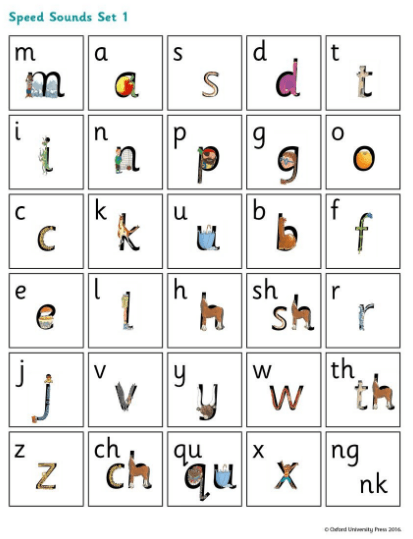
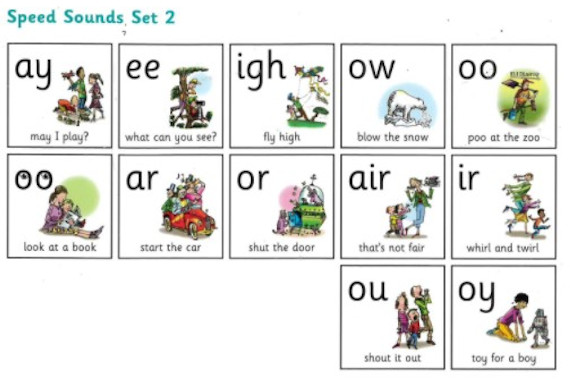
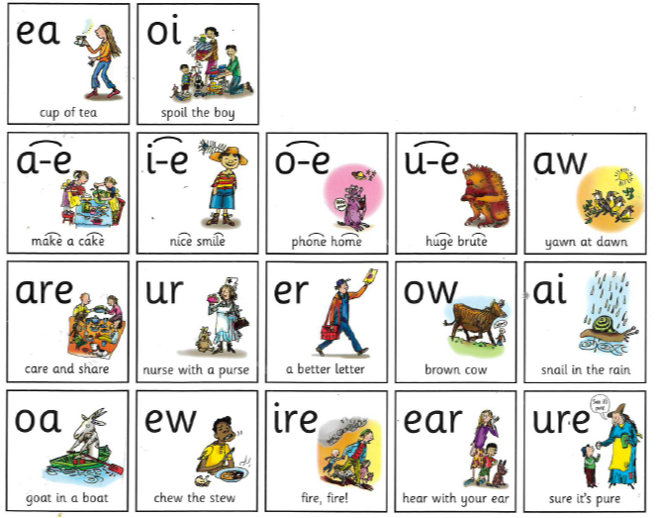
Intent
Phonics is a method for teaching reading and writing of the English language by developing learners' awareness of the letter sounds. At the William Hogarth School we want all our children to master the skills they need to become strong and successful readers. Our Phonics curriculum is inclusive and challenging and develops children’s knowledge of phonics, as well as a life-long love of reading. As a result, our children are given the best opportunity to achieve expected progress, or more, in reading.
Children will:
-
Develop awareness of the letter sounds, learn to form letters correctly, spell words correctly and formulate their ideas step-by-step.
-
Develop a love for reading and incorporate reading into the daily routine.
-
Learn the graphemes that represent the 44 speech sounds.
-
Form letters correctly, spell correctly and compose their ideas into sentences.
‘Almost all children who receive good teaching of phonics, will learn the skills they need to tackle new words. They can then go on to read any kind of text fluently and confidently, and to read for enjoyment’. English Program of Study: Key stages 1 and 2
Implementation
We teach phonics systematically, which teaches children to recognise graphemes and their corresponding phonemes. Research shows that when phonics is taught in a structured way – starting with the easiest sounds and progressing through to the most complex – it is the most effective way of teaching young children to read.
Across EYFS and Year 1, children have daily phonics lessons. Within these lessons, children revise previously learnt sounds, learn a new sound and read and write words with the new sound in them. We do this through a range of activities to engage the children and ensure they enjoy their learning, making it a memorable experience.
At The William Hogarth we follow the DfE validated phonics scheme Read Write Inc., which enables children to read accurately and fluently with good comprehension. This scheme is used by more than a quarter of the UK's primary schools and is designed to create fluent readers, confident speakers and willing writers.
Parents’ guide to Read Write Inc. Phonics:
Click here for a parent guide to Read Write Inc. Phonics.
Parent video: What is Read Write Inc Phonics?
If you would like to find out more about phonics, please click here for the DfE’s documents on effective phonics teaching strategies.
Impact
Children read together as they take turns to read a sentence and point to individual words. Children are encouraged to sound out words if they are unsure.

Children use magnetic letters to enforce their phonic knowledge by building words.


Each classroom has a designated phonics learning area. Sound charts are displayed for children and a pocket chart is displayed containing words and pictures specific to the storybook.


Children apply their phonic knowledge to write their own sentences.
Science Curriculum Overview
|
Year |
1 |
2 |
3 |
4 |
5 |
6 |
|
Autumn 1 |
Materials |
Changing Materials |
Practical Skills |
Space |
Separating Mixtures |
Particles & Chemical Reactions |
|
Autumn 2 |
Building Things |
Mixing & Making |
Raw & Synthetic Materials |
Rock cycle |
Physical & Chemical Changes |
Sustainability |
|
Spring 1 |
Seasons & Weather |
Space |
Sound |
Light |
Magnetism |
Heat |
|
Spring 2 |
Sound |
Light |
Forces |
Phases of Matter |
Electrical Circuits |
Energy |
|
Summer 1 |
Plants |
Habitats |
Plants |
Adaptations |
Evolution |
Cells |
|
Summer 2 |
Living Things |
Human Lifestyle |
Ecosystems |
Human Anatomy |
Reproductive Cycles |
Diet & Lifestyle |
Intent
At The William Hogarth School, we recognise how science impacts every aspect of daily life, and without science humankind would not have made progress throughout history. As one of the core subjects taught at primary level, we give the teaching and learning of science the prominence it deserves.
Our ‘backwards-planned’ curriculum is intended to drive excellent outcomes for all pupils by helping them to establish a powerful knowledge base, to prepare them for the transition to secondary school science. Our science curriculum develops the natural curiosity of each child no matter their demographic, encourages them to have respect for living organisms, and instil in pupils the importance of caring for the natural environment.
Implementation
At The William Hogarth School we have chosen to implement REACH ACADEMY’S Science Curriculum as the core of our curriculum because the content is rigorous, coherent and intelligently sequenced, building on pupils’ prior learning.
In Key Stages 1 & 2, pupils work from expertly designed booklets which detail the specific knowledge pupils must acquire over each sequence of learning. This ensures absolute clarity for all stakeholders on what needs to be learned. Pupils benefit from explicit instruction and deliberate practice of the knowledge rich curriculum so that they can embed the key knowledge deeply and durably. Opportunities to revisit and review learning are built into each science lesson; these include ongoing formative assessment and factual recall quizzes. Dual coding on slides and in booklets supports all pupils in accessing our aspirational and inclusive science curriculum.
Key Stages 1 & 2 enjoy weekly Science lessons. In Early Years, Science is taught explicitly within the Understanding the World aspect of the curriculum, as well as through opportunities that are provided through continuous provision.
Impact
Pupils have secure foundations for understanding the natural world and are well-equipped to tackle the challenges of secondary school Science. Pupils understand that science has changed our lives and it is vital to the world’s future prosperity.
The next steps for our science curriculum have taken on board pupil feedback so that we will include more opportunities for pupils to work practically, developing the skills associated with science as a process of enquiry. This will include embedding investigations within the immediate, local environment so that pupils at The William Hogarth School learn through varied and first-hand experiences.
Humanities
Return to this tab after viewing a subject to minimize this section
Geography Curriculum Overview
| Year | 1 | 2 | 3 | 4 | 5 | 6 |
|---|---|---|---|---|---|---|
| Autumn | Locality (linked to reading curriculum) | Chiswick Geography | Villages, Towns and Cities | Rivers | Slums | Local Fieldwork |
| Spring | Environment (linked to reading curriculum) | Hot and cold places | Mountains, Volcanoes & Earthquakes | Migration | Biomes | Population |
| Summer | Weather and Fieldwork | Comparing Countries of the UK | Water and Weather | Natural Resources | Energy and Sustainability | Globalisation |
Intent
The William Hogarth geography curriculum connects children to their environment and the wider world. It teaches them about both physical and human geography: where cities, countries and continents are located; why rivers flow; how seasons change; and how populations grow and move. Children learn to question how and why people have migrated and how natural resources have been used over time.
Children are global citizens and have a key role in understanding the impact humans have had on the natural environment over time. We want children to deepen their understanding and make connections, ask difficult questions and articulate their opinions. Children will understand that they are the agents of change and the decisions they make now and in the future will ensure the security of the planet.
Implementation
William Hogarth Geographers receive a well-rounded curriculum that develops key skills and makes them excellent geographical decision makers. They learn how to communicate ideas and solutions; make reasoned arguments; manage needs or points of view and evaluate different opinions. Our enquiry based humanities curriculum enables children to build on previous knowledge and provokes curiosity. As children learn more they can debate more and offer solutions that are based on opinion and evidence.
Key Stage 1 children begin to develop the skills and language needed in order to make sense of their locality, the United Kingdom and the world. They experience and observe first-hand seasonal changes and the area in which they live, enabling them to make connections to weather patterns across the world and understand geographical similarities and differences between where they live and the countryside. Children are introduced to geographical skills and fieldwork such as using maps and atlases. They leave Year 1 with a secure base knowledge on which to build on in Key Stage 2.
Key Stage 2 children extend their knowledge and understanding from Key Stage 1 and look at a range of different geographical locations and features. Locational knowledge, place knowledge, human and physical geography and geographical skills and fieldwork underpin the geography curriculum enabling children to deepen their knowledge and make informed observations. They will observe, measure and record using a range of methods that inform discussions. Children will be able to present their ideas to each other and revisit concepts before answering an enquiry question within each unit of work.
Impact



History Curriculum Overview
| Year | 1 | 2 | 3 | 4 | 5 | 6 |
|---|---|---|---|---|---|---|
| Autumn | Transition | Chiswick History | Prehistoric Britain 700,000 BCE - 2,500 BCE |
Roman Britain 43AD |
The Kingdom of Benin 900 - 1897 |
Industrial Revolution 1760 |
| Spring | Living Memory (linked to reading curriculum) | The Great Fire of London 1666 |
Shang Dynasty 1600 BCE - 1046 BCE |
Anglo Saxons 450 |
Medieval Monarchs 1066 - 1485 |
Civil Rights 1954 - 1965 |
| Summer | Travel & Transport | How should we remember Pocahontas? 1596 - 1617 |
Ancient Greece 2500 BCE - 146 BCE |
Vikings 793 |
Changing Britain 1960s |
Twentieth Century Conflict |
Intent
The William Hogarth history curriculum gives pupils the chance to question and understand the past and make a difference to the future. Children will have a sense of time and learn the lessons of history so that they can apply them to the modern world and make a better one. We want children to formulate questions; articulate opinions; investigate sources and evidence; and become history makers.
Implementation
William Hogarth Historians learn how history has shaped and influenced people and societies from the beginning of time to today. History is learnt chronologically, drawing connections and contrasts through continuity and change. Key Stage 1 children are introduced to different historical periods to understand the passing of time. In Key Stage 2 ideas and historical concepts are returned to and developed further.
William Hogarth Historians are given an enquiry question to complete at the end of every unit that encourages concepts and arguments to be debated and explored. Children learn about a period of history or an historical event through a sequence of lessons in which they will gather opinions and knowledge to write a comprehensive essay to the enquiry question.
Key Stage 1 children look at changes within living memory and significant people, including the artist William Hogarth. They are introduced to significant historical events and develop an awareness of the vocabulary of the past. Children develop skills to ask and answer questions and are inspired to learn more as they move through the school.
Key Stage 2 children learn about the history of Britain and the wider world. They look at significant events that have effected modern and ancient societies; and periods of history that have shaped us as global citizens. William Hogarth Historians are able to draw connections and conclusions by learning about the past: ‘Changing Britain’ in Year 5 looks at discrimination and societal change in Britain whilst in Year 6 ‘Civil Rights’ looks at 1950’s America and the more recent Black Lives Matter movement
Impact
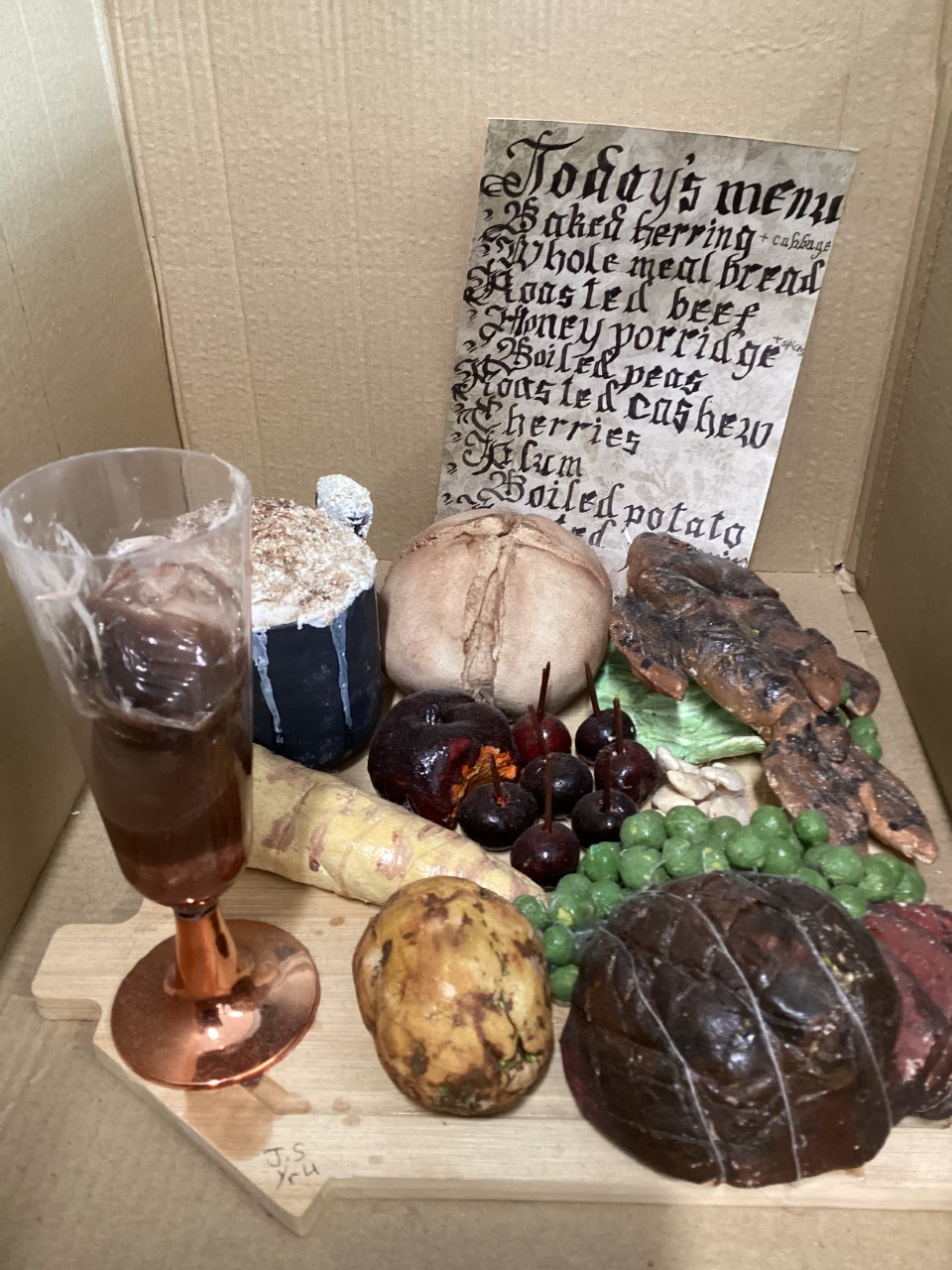
An Anglo-Saxons Home Learning Project. Completed at home with parents and then celebrated at the end of a topic during our Celebration of Learning Event.
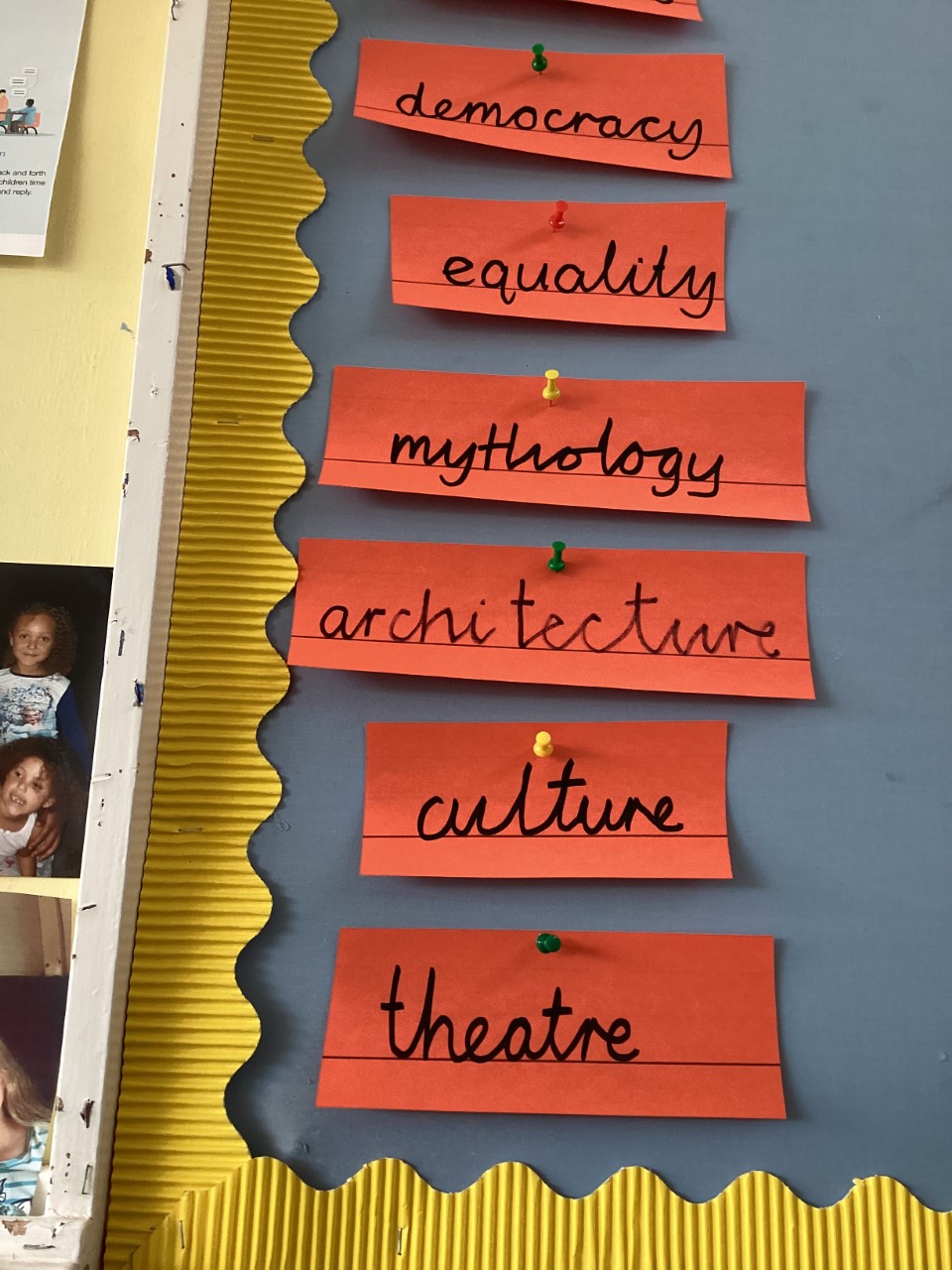 Children develop their vocabulary to use in their debates and discussions.
Children develop their vocabulary to use in their debates and discussions.
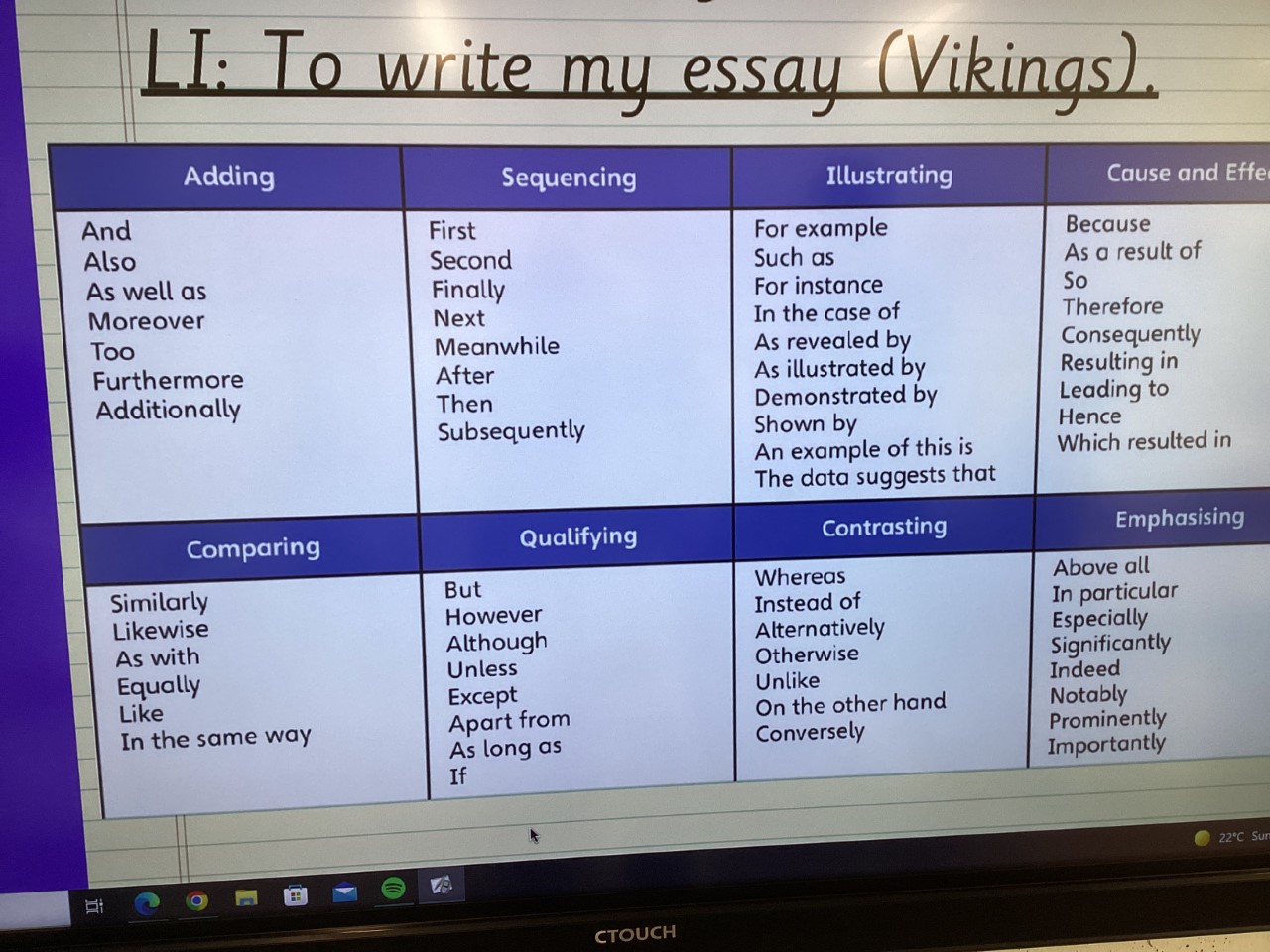 Developing our writing skills across the curriculum
Developing our writing skills across the curriculum
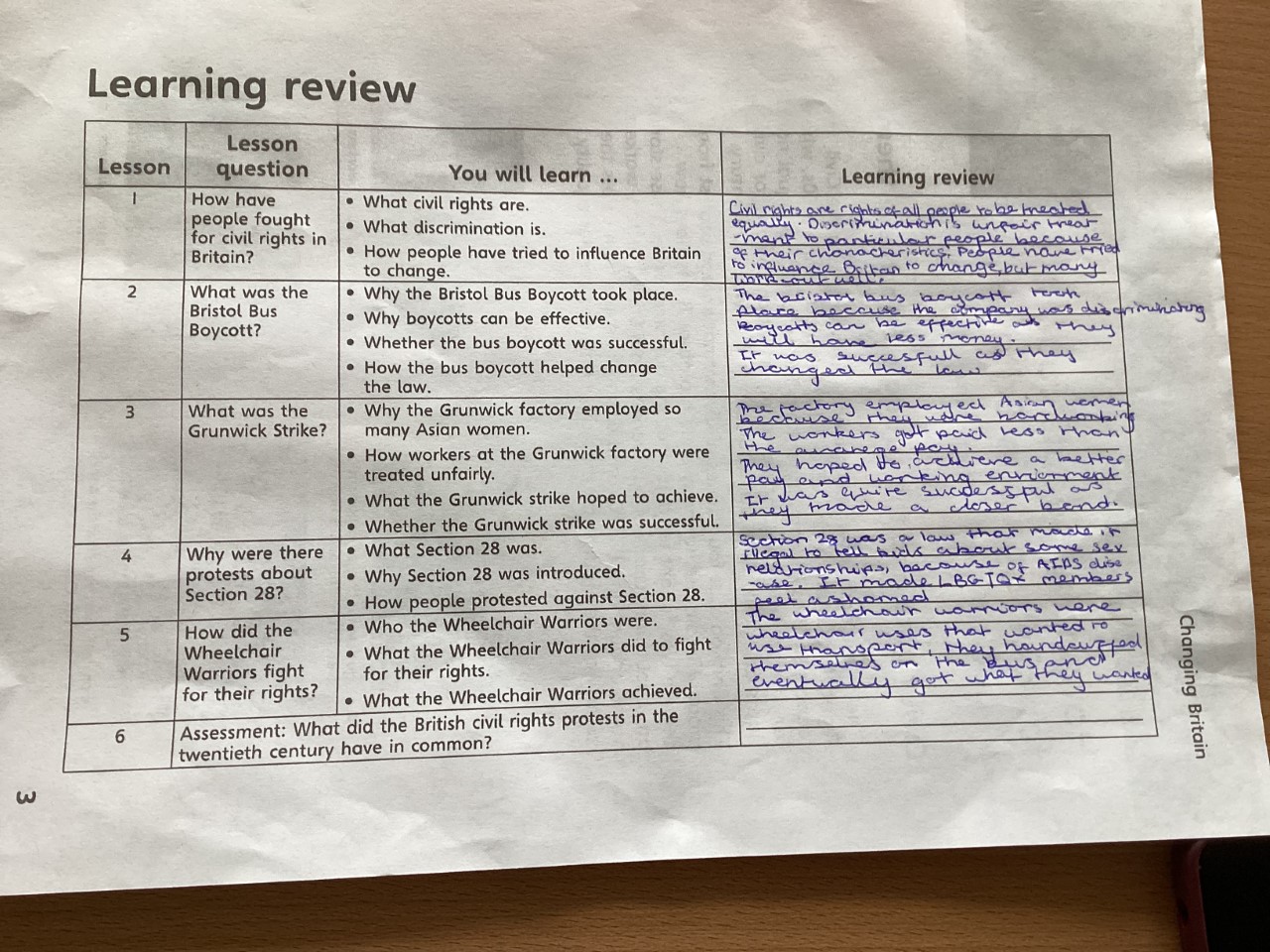 A Learning Review is completed at the end of each lesson to help children organise their thoughts and answer the final essay question.
A Learning Review is completed at the end of each lesson to help children organise their thoughts and answer the final essay question.
 A written essay is produced at the end of a topic to answer an enquiry question. Children use all the skills, knowledge and language gained throughout a sequence of lessons to inform and write their essay.
A written essay is produced at the end of a topic to answer an enquiry question. Children use all the skills, knowledge and language gained throughout a sequence of lessons to inform and write their essay.
Modern Foreign Languages Curriculum Overview
| Year | 3 | 4 | 5 | 6 |
|---|---|---|---|---|
| Autumn 1 |
Greetings and Spanish culture - Classroom instructions - Animals vocabulary - Numbers and plurals Soft ‘ci’ , ‘R’ phoneme |
Revise animals and classroom instructions - A Spanish poem - How to use a Spanish bilingual dictionary - Parts of the body - Negative ‘no’ soft c, z phonemes |
Revise opinions - Sports vocabulary - Sports clothing - Verb tener - Negative - Masculine & feminine nouns - Dictionary skills - Preposition para (for) i phoneme |
Revise tener and ser - Questions - Telling the time - Daily routine |
| Autumn 2 |
Connectives & simple sentences - Gender - Memorisation & storytelling Saying my name - Christmas - Christmas song - Soy (I have) I phoneme |
Colours - Adjectival agreements - Food - Opinions about food - Goldilocks story Christmas: the snowman - son (they are) - Christmas traditions a phoneme |
Weather vocabulary - Hobbies - vocabulary - Pets - Traditional tale: The fox and the crow - Christmas in Spain j, qu phonemes |
Daily routine in other countries - Houses - Rooms in a house - Christmas: presents |
| Spring 1 |
Spanish names - Colours - Opinions - Word order of adjectival order - Traditional story: The Enormous turnip A, E, J, R phonemes |
Quisiera with food - Revise numbers 1-15 - Months - Numbers 16-31 - Spanish maths:division and multiplication - Word order - Me gustan with plural nouns - Quiero Hard c, ll, qu, ch, phonemes |
Verb ser - Dictionary skills - Revise dates, months - Legends - Numbers 32-60 - School subjects - The three wise men u phoneme |
Tener phrases - Puedo + infinitive - Bedroom descriptions - Places in a town |
| Spring 2 |
Numbers 1-10 - Spanish maths: addition and - subtraction - Tengo (I have) - Age - Easter bunny/eggs |
Dates and birthdays - Revise numbers 1-31 - Third person - Personal descriptions (hair and eye colour) - Easter: Las Fallas festival J, soft c phonemes |
Primary school in Spain - Subject preferences - Telling the time - Reasons - Verb ir - Transport vocabulary - Easter: Los tres magos (three kings) - Project: Easter cards Silent h phoneme |
Revise places in town - Revise ir - Directions - Revise food - Buying food - April fool’s day - Toys around the world |
| Summer 1 |
Definite (el,la,los,las) and indefinite (un, una, unos, unas) articles - Quisiera (I would like) - Extending sentences with pero Hard C phoneme |
Family vocabulary Possessive adjectives (mi, mis) Further dictionary skills - Clothing vocabulary - Revise adjectival agreements i phoneme |
Items in a classroom - Possessive adjectives (revision and new) - Prepositions hard c phoneme |
Numbers 61-100 - Ordering food in a café - Famous Spanish food and menus - The preterite (past) tense |
| Summer 2 |
Es - Extending sentences with también - Numbers 1-15 - Days of the week - Assessments Barcelona project R, U, I, hard g phonemes |
Memorise a short text - (Talk4writing) Revise food, opinions, months, numbers and personal descriptions - Assessments - Spanish festival project ll phoneme |
Revise ir, key phonemes - The simple future tense - Alphabet - Revision - Assessments Project: Day of the dead |
The preterite (past) tense - Revision - Assessments - The Spanish alphabet |
Intent
A high-quality languages education should foster pupils’ curiosity and deepen their understanding of the world. The teaching should enable pupils to express their ideas and thoughts in another language and to understand and respond to its speakers, both in speech and in writing.’ (National Curriculum 2014 – Appendix A)
Learning a language enriches the curriculum, helping to create enthusiastic learners and to develop positive attitudes to language learning. The skills, knowledge and understanding gained contribute to the development of children’s oracy and their understanding of grammatical structures. At The William Hogarth School, we aim to prepare children for the rigours of learning a language at Key Stage 3 so that they can make a successful and confident transfer to secondary school.
Our aim is for pupils to be able to:
- understand and respond to spoken and written language from a variety of authentic sources
- speak with increasing confidence, fluency and spontaneity, finding ways of communicating what they want to say, including through discussion and asking questions, and continually improving the accuracy of their pronunciation and intonation
- write at varying length, for different purposes and audiences, using the variety of grammatical structures that they have learnt
- discover and develop an appreciation of a range of writing in the language studied.
Our curriculum provides an appropriate balance of spoken and written language and lays the foundations for further foreign language teaching at Key Stage 3. It enables pupils to understand and communicate ideas, facts and feelings in speech and writing, focused on familiar and routine matters, using their knowledge of phonology, grammatical structures and vocabulary.
Implementation
Children in Key Stage 2 (Year 3 – Year 6) enjoy 45 minute Spanish lessons weekly. Lessons are delivered by a first language speaker to support the children’s accurate phonological development in the language. Teaching and learning follows the ‘iLanguages’ programme of study which ensures clear progression in the development of the four main skills children need to build proficiency in when learning another language:
- speaking
- listening
- reading
- writing
Children are taught using a range of strategies to support the inclusion of all pupils, including:
- Games (developing vocabulary through repetition; embedding speaking and listening in play)
- Songs and rhymes (building phonetic awareness, pattern and sound through memory)
- Role play (developing vocabulary in contexts that are familiar to the children)
Impact
Children are taught to:
- listen attentively to spoken language and show understanding by joining in and responding
- explore the patterns and sounds of language through songs and rhymes and link the spelling, sound and meaning of words
- engage in conversations; ask and answer questions; express opinions and respond to those of others; seek clarification and help
- speak in sentences, using familiar vocabulary, phrases and basic language structures
- develop accurate pronunciation and intonation so that others understand when they are reading aloud or using familiar words and phrases
- present ideas and information orally to a range of audiences
- read carefully and show understanding of words, phrases and simple writing
- appreciate stories, songs, poems and rhymes in the language
- broaden their vocabulary and develop their ability to understand new words that are introduced into familiar written material, including through using a dictionary
- write phrases from memory, and adapt these to create new sentences, to express ideas clearly
- describe people, places, things and actions orally and in writing
- understand basic grammar appropriate to the language being studied, including: feminine, masculine forms and the conjugation of high-frequency verbs; key features and patterns of the language; how to apply these, for instance, to build sentences; and how these differ from or are similar to English.
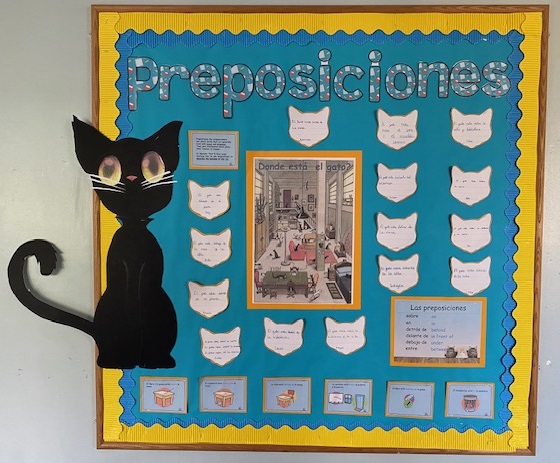
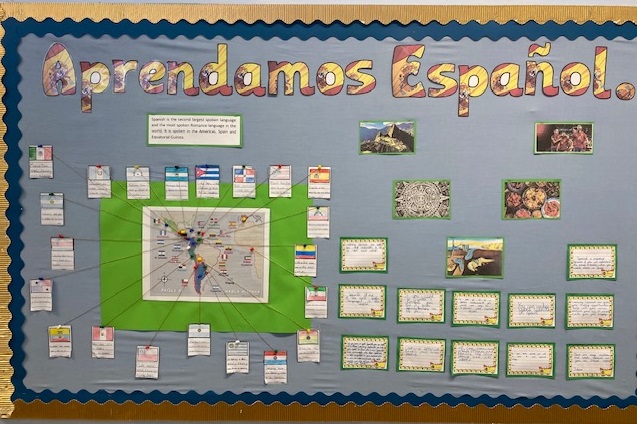
Curriculum Overview
2022/2023
| Year | N | R | 1 | 2 | 3 | 4 | 5 | 6 |
|---|---|---|---|---|---|---|---|---|
| Autumn 1 | Experiencing music | Music stepping stones | Starting Out with music | Pulse and tempo |
Glockenspiel 2 |
World music | Glockenspiel 4 | Glockenspiel 5 |
| Autumn 2 |
Music & Groove (pitch and pulse) |
Into the woods (songs & sounds) | In the Autumn | Glockenspiel 1 | Music around the world 1 | Glockenspiel 3 | Percussion & Rhythm 1 | Percussion & Rhythm 2 |
| Spring 1 |
Sounds Around 1 |
Sounds Around 2 |
Exploring pulse &rhythm | Making Music 1 | Making Music 2 | Reading Music | Exploring Classical Music 1 | Exploring Classical Music 2 |
| Spring 2 | The world around us | Spring Time (pulse, rhythm & listening) | Exploring Pitch | Music for folk dancing (world music) | Music & Movement | Making Music 3 | Exploring Musical Notation | Composition |
| Summer 1 | Rhyme time 1 | Rhyme time 2 | Animals | See & hear | Playing Together 2 | Playing with Sound | Exploring Pop Music 1 | Exploring Pop Music 2 |
| Summer 2 | Play & sing 1 | Play & sing 2 | Holiday time (world music) | Playtime together 1 | Exploring Musical Theatre | Elements of Music | Music Around the World 2 | Music for Film & TV |
2023/2024 to be confirmed
| Year | N | R | 1 | 2 | 3 | 4 | 5 | 6 |
|---|---|---|---|---|---|---|---|---|
| Autumn 1 | tbc | tbc | Exploring pulse and tempo 1 | Exploring pulse and tempo 2 | Reading notation 1 | Reading notation 2: 2 3 & 4 time | Reading notation 3: time signature | Reading notation 4: Rhythm ensemble |
| Autumn 2 | tbc | tbc | Exploring rhythm 1: playing and copying | Exploring rhythm 2: stick notation | Exploring notation 1: High and Low | Exploring notation 2: Follow the score | Developing sight reading skills 1 | Developing sight reading skills 2 |
| Spring 1 | tbc | tbc | Exploring pitch 1 - High & Low | Exploring pitch 2 - Dot notation | Ensemble skills 1 - Call and response | Ensemble skills 2 - Melody & accompaniment | Pop music 1 - Arrangements & Improvisation | Pop music 2 - Chords and bass lines |
| Spring 2 | tbc | tbc | Creating music 1 - sound effects & storytelling | Creating music 2 - Musical conversations | Composition Skills 1 - Pitch Rhythm & structure | Composition Skills 2 - Pentatonic phrases | Creating music for film & TV - Character, Atmosphere & environment | Composition project 1 - Improvisation, composition & notation |
| Summer 1 | tbc | tbc | Singing and playing skills 1 - Pitch-matching | Singing and playing skills 2 - Follow the leader | Exploring musical theatre - Piano & Forte | Exploring Classical music 1 - Legato and Staccato | Exploring Classical music 2 - Ensemble performace | Composition project 2 - Notation, expression and performance |
| Summer 2 | tbc | tbc | Understanding Rhythm & Pitch (percussion) | Playing Rhythm and pitch (Glockenspiel) | Becoming musicians 1 - Dynamics & tempo | Becoming musicians 2 - Major & minor | Becoming musicians 3 - Chords & triads | Singing with style |
Intent
At The William Hogarth, we want our children to be ready to take on the world in all curriculum areas by the time they leave us. It is our intent that we aim to provide an enjoyable and challenging music curriculum, which gives pupils the opportunity to sing, play, create and perform, both individually and collaboratively. Developing musicianship skills, through active music making and exposure to a global range of music, gives pupils a wide understanding and appreciation of music and feeds into their own creativity and self-expression. All children have access to music regardless of their academic ability, race, ethnicity, background and language. SEND pupils are actively encouraged to participate fully as music is often an area of the curriculum, which allows them to excel.
As a result, our pupils become confident composers, creators and performers with an understanding of musical notation, the skills to critically evaluate their own and others’ performances and a passion to learn about and share their love of music.
The national curriculum for music aims to ensure that all pupils:
- Perform, listen to, review and evaluate music across a range of historical periods, genres, styles and traditions, including the works of the great composers and musicians.
- Learn to sing and to use their voices, to create and compose music on their own and with others, have the opportunity to learn a musical instrument, use technology appropriately and have the opportunity to progress to the next level of musical excellence.
- Understand and explore how music is created, produced and communicated, including through the inter-related dimensions: pitch, duration, dynamics, tempo, timbre, texture, structure and appropriate musical notations.
Implementation
Our school provides a clear and comprehensive scheme of work in line with the National Curriculum through ‘Sing Education’, and teaching and learning shows progression across both key stages within the strands of music
The elements of music are taught so that children are able to use the language of music to dissect it and understand how it is made, played, appreciated and analysed. Pupils learn how to compose focussing on different dimensions of music, which in turn feeds their understanding when listening, playing or analysing/ appraising music
Children also have access extra-curricular musical participation opportunities such as Rock Steady, piano and guitar lessons.
National Curriculum Music Program of Study
Music Enrichment
At The William Hogarth School we provide three enrichment activities which are paid for activities: Rock Steady - Piano lessons - Guitar lessons.
For full details please visit their page here.
Creativity & Technology
Return to this tab after viewing a subject to minimize this section
Art & Design Curriculum Overview
| Year | Autumn | Spring 1 | Spring 2 | Summer |
|---|---|---|---|---|
| 1 |
Spirals
|
Simple print-making
|
Exploring watercolour
|
Making birds
|
| 2 |
Explore and draw
|
Exploring Monoprint
|
Expressive painting
|
Stick transformation
|
| 3 |
Charcoal, gestural drawing
|
Shape & colour - painting with scissors
|
Cloth, thread, paint
|
Telling stories
|
| 4 |
Story telling through drawing
|
Exploring pattern
|
Exploring Still - life
|
Sculpture, structure and inventiveness
|
| 5 |
Typography and maps
|
Making monotypes
|
Mixed media - cityscapes
|
Architecture
|
| 6 |
2D drawing to 3D making
|
Design and technology scheduled | Design and technology scheduled |
Paint, surface, texture - exploring identity
|
Art and Design Curriculum documents
Intent
The over-arching intent of our Art & Design Curriculum is to enable all children to think and act creatively in a range of different contexts and for a variety of reasons. We want children to enjoy the creative process and experience – ‘the journey’ – so that they:
- Are motivated to engage in creative activities
- Are empowered to make their own creative decisions as a result of their learning
- Grow to appreciate art and design as both an individual and collective experience
- Value the significance of art and design as a tool for documenting a creative response to the world around them
Our school mantra is:
- Excellence for everyone
- Every second counts
- Everyone is accountable
- No excuses
This underpins our efforts to support all children in becoming confident, independent artists who can articulate their choices and use their learning to support them in taking creative risks rather than working towards predefined, prescribed outcomes.
Implementation
At The William Hogarth School, children learn Art and Design as a discrete subject to support progression in their skills, knowledge and experience. Each year group undertakes 6 projects during the course of the school year, one for each half term. The curriculum is designed so that the learning for each year group builds upon skills that have been learnt previously, thereby ensuring progression.
Our Art & Design curriculum is organised into 8 key strands:
- Drawing
- Sketchbooks
- Printmaking
- Sculpture
- Painting
- Craft
- Textiles
- Design
Within each year group, we balance the development of skills in the main strands with exploration of a variety of media. All teachers encourage children to experiment, take creative risks and use their learning to be innovative in their responses. The plan for each year group provides opportunities for children to:
- Work at different scales
- Develop traditional skills and be experimental
- Undertake quiet, reflective work and more dynamic work
- Work individually and collaboratively
- Work in 2-D and 3-D
We have the very highest expectations for our pupils’ creative endeavours and capabilities. To encourage this, we introduce them to a wide range of materials from an early age to broaden their creative experiences and build their understanding and skills.
We appreciate that Art & Design is an excellent vehicle to enrich the whole curriculum and, where appropriate and relevant links can be made, we make use of these opportunities. As a result, the half-termly humanity topic may provide a stimulus or a starting point for learning in Art & Design. Whole school Art & Design projects inspired by British Values or through our cultural capital work are proudly displayed and celebrated.
Throughout the year, each class enjoys the opportunity to make use of our fantastic, dedicated art room, diverse outside space and the wonderful surrounding parks for their weekly Art & Design lessons. This allows for creative exploration, careful observation and a broad variety of drawing and sketching opportunities using sketchbooks (made and bought). Children are encouraged to use their surroundings to stimulate creative responses and to explore their creativity in different contexts.
Impact
When reviewing impact, we consider all aspects of the children’s learning in Art & Design. This includes:
- The quality of what the children have made, as well as how they made it
- The skills and processes they have developed, refined and acquired
- What they have learned about the different tools &/or equipment they have used
Children have an enormous sense of pride in their learning in Art & Design which is reflected throughout the school in vibrant and creative corridor displays. As well as show-casing the children’s learning (process and outcome), these displays enrich and improve our school environment, demonstrating our whole school passion for the subject.
Our Art & Design curriculum helps every child to celebrate their uniqueness and contributes to our school community’s sense of togetherness by reflecting on how our individual responses can fit in and build a collective perspective.
The National curriculum aims for KS1 and KS2
The national curriculum aims to ensure that all pupils:
- Produce creative work, exploring their ideas and recording their experiences
- Become proficient in drawing, painting, sculpture and other art, craft and design techniques
- Evaluate and analyse creative works using the language of art, craft and design
- Know about great artists, craft makers and designers, and understand the historical and cultural development of their art forms.
These aims and objectives underpin every choice and decision we take at The William Hogarth School when constructing and delivering our Art & Design Curriculum.
Computing Curriculum Overview
| Early Years Computing | ||||||
|---|---|---|---|---|---|---|
| Understanding the world Our role play area includes tills, mouse and a keyboard. |
Literacy Children create stories about a BeeBot’s journey. This is linked to traditional tales. |
Physical Development Children develop their fine motor skills by manipulating devices. |
Communication and language Children learn to use precise instructions e.g. making playdough recipes. |
Personal, social and emotional development Read a range of online safety books e.g. Chicken Clicking and Smartie the Penguin. |
Expressive arts and design Children create pictures and videos using iPads and the interactive whiteboard. |
Mathematics Children develop understanding of left, right and directional language. |
| Year | 1 | 2 | 3 | 4 | 5 | 6 |
|---|---|---|---|---|---|---|
| Autumn 1 | Online safety – personal information | Online safety – Games and Apps | Online safety – Communication devices | Online safety – Cyberbullying | Online safety – Social media | Online safety – Behaviour and wellbeing |
| Autumn 2 | Digital Writing | Digital Photography | Animation | Audio Editing | Video Editing | Web Page Creation |
| Spring 1 | Moving A Robot | Robot Algorithms | Scratch – sequence in music | Lego WeDo – send messages | Scratch – selection in quizzes | Turing Tumbles |
| Spring 2 | Scratch Jr - Introduction to Animation | Scratch Jr – introduction to quizzes | Lego WeDo – Moon Base | Scratch – repetition in games | Turing Tumbles | Scratch – variables in games |
| Summer 1 | Grouping Data | Pictograms | Branching Databases | Data Logging | Flat File Databases | Lego WeDo – grabbing objects |
| Summer 2 | Technology Around Us | IT Around Us | Connecting Computers | The Internet | Lego WeDo – Volcano Alert | Communication – search engines |
Intent
Our computing curriculum is creative, critical and collaborative with an underpinning emphasis on online safety. Our children love to explore computing functions as they work towards a creative output. At the heart of our computing curriculum is the idea that William Hogarth children are ‘computational thinkers’. This empowers children to solve problems and to better conceptualise computer-based technology.
Hogarth computational thinkers transfer their skills learnt in computing to other areas of the curriculum and their lives. Children learn key computing ideas through practical hands on experiences. Our computing curriculum inspires children in today’s world and better prepares them for the future.
Implementation
We have organised our computing curriculum into three strands. As a school we cover each strand at the same time. This enables a whole school community response to computing.
- Digital literacy
- Computer Science
- Information technology
Digital Literacy
In the first half term of autumn children complete an online safety unit of work developed by PiXL. Children explore a wide range of online safety situations and discuss the benefits and risks posed online. This learning is evidenced in our PSHE floor books. In the second half of autumn each class explores multimedia such as photography, animation, audio or video editing and web page creation.
Computer Science
In spring term each year group has a focus on computer science. We use the NCCE materials to teach children key coding and programming skills. In Key stage 1 children use floor robots such as BeeBots and Scratch Jr to embed their knowledge of algorithms, debugging and logical reasoning. Key Stage 2 pupils learn how to use sequence, selection, repetition and variables in programs by using Scratch, Turing Tumbles and Lego WeDo.
Information Technology
In the summer term children develop their understanding of information technology. Pupils use computer software to handle data and answer real world questions. As children progress through the school they enhance their knowledge of technological devices, the internet and computer networks. Throughout children are supported to use technology safely and respectfully in school and in their lives outside of school.
Impact
Our computing curriculum has had a great impact on children’s learning, attitudes and safety when using technology inside and outside of school. It has a clear progression which is sequenced with defined end points as children share what they have learnt throughout the unit. We conducted a pupil voice survey to which the response showed that 97% of children thought they had made progress and the vast majority believing they had learnt more this year as a result of our fresh computing curriculum. Below are some examples of different year groups exploring their computing units:

Children developed a prosthetic hand device using Lego WeDo.
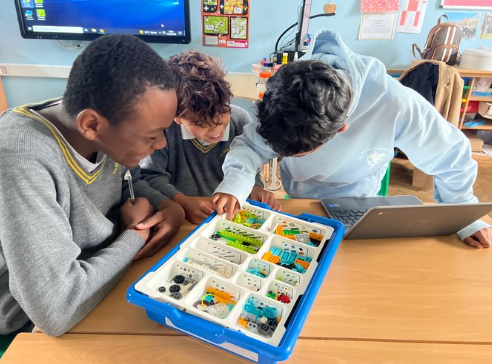
Children are computational thinkers and we encourage tinkering, debugging and perseverance.
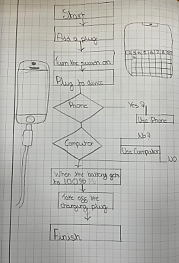
Here pupils have explored the terms decomposition, pattern recognition, logical reasoning and algorithms.
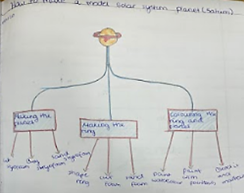
Learning these computational terms has supported children’s thoughts and processes during computer science units.
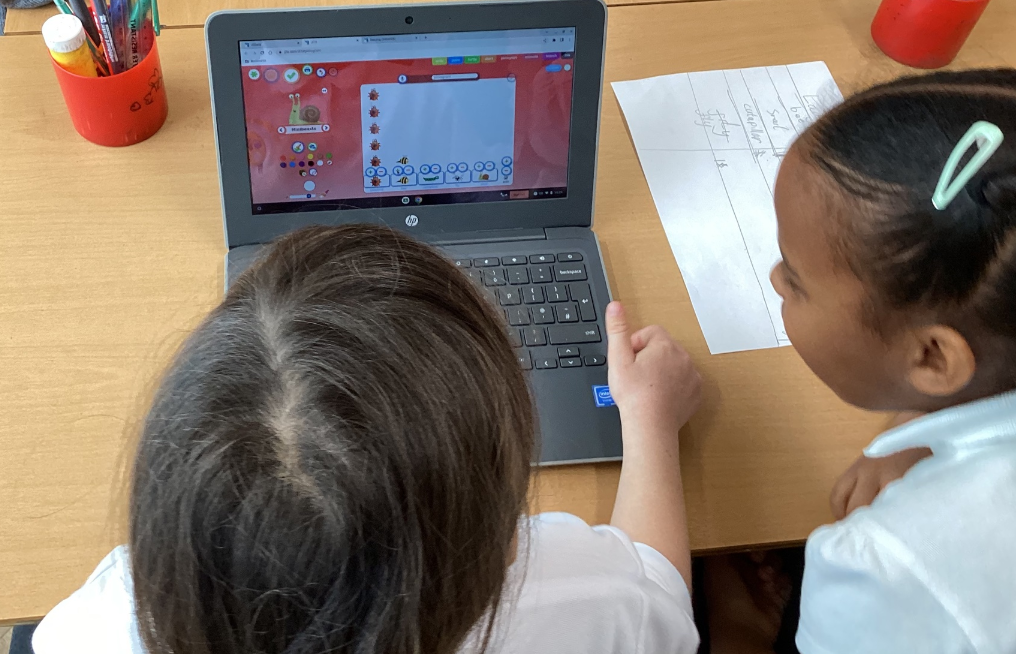
In a handling data unit children started by creating tally charts based on minibeasts they could see then they created a pictogram on Chromebooks.
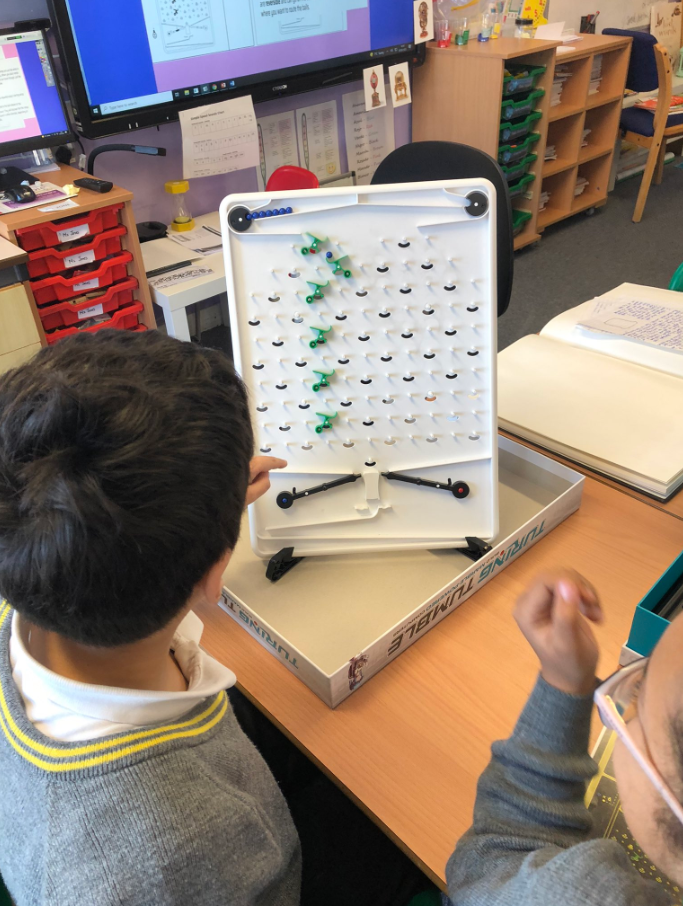
Turing Tumbles are used for children to discover how computers work. Children learn to use different parts such as bits, interceptors, crossovers and gears.
Design Technology Curriculum Overview
| Autumn | Summer | |
|---|---|---|
| Programme of study focus |
Mechanisms or Mechanical Systems |
Textiles or Structures |
| Year 1 |
Mechanisms: Sliders and Levers - Celebration Card (Christmas) |
Structures: Freestanding Structures - A chair for Goldilocks |
| Year 2 |
Mechanisms: Wheels & Axles Making a trolley to help the 'Night Gardener' |
Textiles: Templates & Joining techniques - Pocahontas Puppets |
| Year 3 |
Mechanical Systems: Pneumatics - Toys & Games |
Structures: Shell Structures (incl' CAD) - Gift Boxes |
| Year 4 |
Mechanical Systems: More complicated Levers & Linkages - Mangonels and Catapults |
Textiles: 2D shape to 3D product - phone cases - sustainability |
| Year 5 |
Mechanical Systems: Cams - Moving toys |
Structures: Frame Structures: - Dens |
| Year 6 |
(Spring Term) Mechanical Systems: Pulleys & Gears - Squashed Tomato Challenge |
Textiles: Combining different fabric shapes (incl CAD) Fashion Show |
Design & Technology National Curriculum program of study
Intent
Our Design and Technology curriculum is intended to give children the building blocks to become creative problem solvers who can respond to the rapidly changing world around them. We aim to build self-confidence and resilience so that, on transition to secondary school, William Hogarth School children:
- can think for themselves and clearly articulate their ideas,
- look forward to trying out their ideas, either independently or as part of a team
- take obstacles in their stride and view them as an opportunity to do things differently.
Implementation
At The William Hogarth School, we have a split timetable for Design & Technology and Art & Design These subject disciplines are separated to secure progression in skills, knowledge and experience.
Cooking and Nutrition is taught as a discrete subject at The William Hogarth School and has its own curriculum information page.
Our Design & Technology Curriculum is organised into 3 key strands:
- Mechanisms / mechanical systems
- Structures
- Textiles
Each year group undertakes 2 programmes of study during the course of the school year based on the Design and Technology Association’s ‘Projects on a Page’. The curriculum is designed so that the learning for each year group builds upon skills that have been learnt previously, thereby ensuring progression. Each programme of study allows children to develop the skills and aptitudes illustrated below:
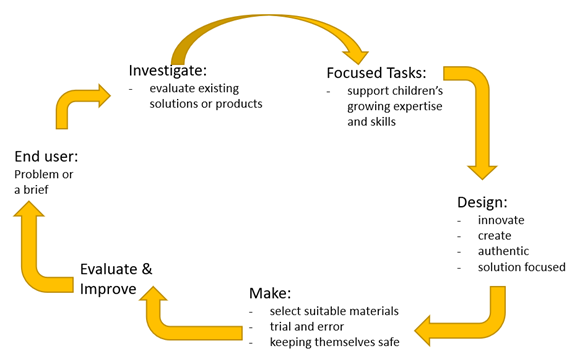
Non-specialist teachers are supported to deliver high quality design and technology lessons through a range of CPD opportunities and school membership of the Design & Technology Association.
We have the very highest expectations for our pupils’ creative endeavours and problem-solving capabilities. To encourage this, we introduce them to a wide range of materials and equipment from an early age to broaden their experiences and build their understanding and skills.
We appreciate that Design & Technology is an excellent vehicle to embed and enrich other aspects of our school curriculum and, where appropriate and relevant links can be made, we make use of these opportunities.
Impact
When reviewing impact, we consider:
- The process of design and making
- Whether this is authentic innovation that addresses the problem or brief
- The skills and processes children have developed, refined and acquired
- What children have learned about the different tools, materials &/or equipment they have used
Our Design & Technology curriculum helps every child to celebrate their ideas and creativity and contributes to our school community’s sense of togetherness by reflecting on how our individual responses can solve problems.
Design & Technology Progress Map
Science Curriculum Overview
|
Year |
1 |
2 |
3 |
4 |
5 |
6 |
|
Autumn 1 |
Materials |
Changing Materials |
Practical Skills |
Space |
Separating Mixtures |
Particles & Chemical Reactions |
|
Autumn 2 |
Building Things |
Mixing & Making |
Raw & Synthetic Materials |
Rock cycle |
Physical & Chemical Changes |
Sustainability |
|
Spring 1 |
Seasons & Weather |
Space |
Sound |
Light |
Magnetism |
Heat |
|
Spring 2 |
Sound |
Light |
Forces |
Phases of Matter |
Electrical Circuits |
Energy |
|
Summer 1 |
Plants |
Habitats |
Plants |
Adaptations |
Evolution |
Cells |
|
Summer 2 |
Living Things |
Human Lifestyle |
Ecosystems |
Human Anatomy |
Reproductive Cycles |
Diet & Lifestyle |
Intent
At The William Hogarth School, we recognise how science impacts every aspect of daily life, and without science humankind would not have made progress throughout history. As one of the core subjects taught at primary level, we give the teaching and learning of science the prominence it deserves.
Our ‘backwards-planned’ curriculum is intended to drive excellent outcomes for all pupils by helping them to establish a powerful knowledge base, to prepare them for the transition to secondary school science. Our science curriculum develops the natural curiosity of each child no matter their demographic, encourages them to have respect for living organisms, and instil in pupils the importance of caring for the natural environment.
Implementation
At The William Hogarth School we have chosen to implement REACH ACADEMY’S Science Curriculum as the core of our curriculum because the content is rigorous, coherent and intelligently sequenced, building on pupils’ prior learning.
In Key Stages 1 & 2, pupils work from expertly designed booklets which detail the specific knowledge pupils must acquire over each sequence of learning. This ensures absolute clarity for all stakeholders on what needs to be learned. Pupils benefit from explicit instruction and deliberate practice of the knowledge rich curriculum so that they can embed the key knowledge deeply and durably. Opportunities to revisit and review learning are built into each science lesson; these include ongoing formative assessment and factual recall quizzes. Dual coding on slides and in booklets supports all pupils in accessing our aspirational and inclusive science curriculum.
Key Stages 1 & 2 enjoy weekly Science lessons. In Early Years, Science is taught explicitly within the Understanding the World aspect of the curriculum, as well as through opportunities that are provided through continuous provision.
Impact
Pupils have secure foundations for understanding the natural world and are well-equipped to tackle the challenges of secondary school Science. Pupils understand that science has changed our lives and it is vital to the world’s future prosperity.
The next steps for our science curriculum have taken on board pupil feedback so that we will include more opportunities for pupils to work practically, developing the skills associated with science as a process of enquiry. This will include embedding investigations within the immediate, local environment so that pupils at The William Hogarth School learn through varied and first-hand experiences.
Character
Return to this tab after viewing a subject to minimize this section
P.H.S.E. Curriculum Overview
| Autumn 1 | Being Me in My World | Includes understanding my place in the class, school and global community as well as devising Learning Charters. |
|---|---|---|
| Autumn 2 | Celebrating Difference | Includes anti-bullying (cyber and homophobic bullying included) and diversity work. |
| Spring 1 | Dreams and Goals | Includes goal-setting, aspirations for yourself and the world and working together. |
| Spring 2 | Healthy Me | Includes drugs and alcohol education, self-esteem and confidence as well as healthy lifestyle choices. |
| Summer 1 | Relationships | Includes understanding friendship, family and other relationships, conflict resolution and communication skills. |
| Summer 2 | Changing Me | This puzzle includes sex and relationships education in the context of coping positively with change. (includes age-appropriate sex education) |
Intent
We enable children to develop a deepening knowledge of their health and wellbeing, including their mental and physical health. PSHE supports our children to become healthy, independent and responsible members of society. We support children to recognise how they are developing personally and social. PSHE also empowers us to challenge many of the social, moral and cultural issues that are part of society today.
Implementation
At The William Hogarth School, we use a variety of resources to support children’s Personal Social Health and Emotional Education. The main scheme that we use is Jigsaw. Within Jigsaw the children cover the same six topics each year, building on these exponentially each year. These six topics have been identified as focal points in a child’s development.
Impact
Displays
Around our school you will see a variety of celebratory and functioning displays. In our classrooms, we have a working wall that focusses on our current PSHE unit. We also have displays that celebrate a particular idea or theme within the class.



Floor books
Our floor books feature a range of pictures and pieces of work from our PSHE topics. We also endeavour to feature whole school events such as: Children’s Mental Health Week, The Hogarth High Tea and The 10 Metre Challenge.

School events

Express yourself day – part of our celebration of Children’s Mental Health week.

We often have visits from outside agencies. This year we have had safety talks from the police and TFL. Teaching our children important life skills.

Each year group holds a class assembly that focuses on an area of social and cultural capital.

Across the school we celebrated International Women’s week. Each class chose an inspirational female figure to research.
(please note this page is being re-constructed and is not complete)
Religious Education Curriculum Overview
| Autumn 1 | Autumn 2 | Spring 1 | Spring 2 | Summer 1 | Summer 2 | |
|---|---|---|---|---|---|---|
| Year 1 | How did the world begin? Exploring a range of creation stories in imaginative ways, children will present their own ideas about creators and creation using art and Language. (Christian, Jewish, Hindu and locally represented worldviews.) |
What do some people believe God looks like? Looking at Islamic art, Hindu avatars and images of the Christmas story, children will explore how different people understand God on Earth. (Christian, Hindu and Muslim worldviews.) |
What is God’s job? Investigating the roles of God through stories and sacred texts, Children will examine the actions of God and what this means to some different people. (Jewish, Zoroastrianist, Muslim, Hindu and Christian worldviews.) |
Why should we care for the world? Building on their understanding of creation stories, children will study quotes and religious stories about the relationship between humans and nature. (Jewish, Muslim, Hindu, Jain and Humanist worldviews.) |
How do we know that new babies are special? Finding out about different ceremonies to welcome home a new baby. Children will explore some of the symbolism in these ceremonies. (Muslim, Hindu, Humanist and locally represented worldviews.) |
Why should we care for others? Listening to stories from different worldviews and considering what these stories say about caring for others and how they impact people’s lives. (Christian, Jewish, Muslim, Baha’i and locally represented worldviews.) |
| Year 2 | Why do we need to give thanks? Using various sources including survey data, children will learn the beliefs Around using offerings to show gratitude. They will get hands-on with artefacts used during puja and write their own lyrics for a song of thanks (Hindu, Christian and Humanist worldviews) |
What do candles mean to people? Investigate the many ways light is used in religious and worldview contexts. Children explore different festivals through artwork and stories, focusing on candles (Christian, Hindu, Jewish and locally represented worldviews.) |
How do we know some people have a connection to God? Children will listen to stories from diverse perspectives about the lives of significant religious figures and explore how we recognise that some individuals have a special connection to God (Sikh, Muslim, Christian, Jewish and Hindu worldviews.) |
What is a prophet? Children will learn more about significant people like Abraham, Moses, Muhammad, and Guru Nanak. They will look for clues in religious stories and art to understand the characteristics and promises some of these religious people shared with humanity. (Christian, Muslim, Jewish and Sikh worldviews.) |
How do some people talk to God? Thinking about the importance of communication in relationships, children look at the different ways people pray. They will explore objects used during prayer and express their ideas about worship through art (Christian, Muslim, Jewish and Sikh worldviews.) |
Where do some people talk to God? Building on their learning about prayer and worship, children look at buildings within their local area and beyond Children design their own place of worship based on their learning (Hindu, Alevi, Muslim, Sikh and locally represented worldviews.) |
| Year 3 |
What makes us human? |
Where do we get our morals from? Reflecting on why people make choices about how to live a good life, children will consider their views on what is right and wrong. They will write their own moral code mini-book inspired by their learning in this unit. (Christian/Jewish, Buddhist, Muslim, Hindu and Humanist worldviews.) |
Is scripture central to religion? Building on their learning about guidance in religious texts, children will investigate how scripture is used by different people. Using virtual or real-life visits to places of worship, they act as detectives to find evidence of scripture. (Jewish, Muslim, Christian, and locally represented worldviews.) |
What happens if we do wrong? Making connections between their previous learning about the role of God and moral guidance, children will explore the meaning of consequences. They will design and play snakes and ladders-style games based on learning beliefs. (Hindu, Muslim, Humanist, Christian and Jewish worldviews.) |
Why is water symbolic? Looking at the many ways water is used in rituals and ceremonies; children will experience the symbolic use of water and learn about the historical connections water has in some religions. From this, they create poetry to express ideas about the symbolism of water. (Christian, Sikh, Muslim, Shinto and locally represented worldviews.) |
Why is fire used ceremonially? Looking at the many ways water is used in rituals and ceremonies; children will experience the symbolic use of water and learn about the historical connections water has in some religions. They will create poetry to express ideas about the symbolism of water. (Christian, Sikh, Muslim, Shinto and locally represented worldviews) |
| Year 4 | Are all religions equal? Exploring the origins of religions, children explore geographical and historical links and connections between some religions. They will investigate Sikh and Bahá’í beliefs and practices that reflect unity and equality to plan a promotional video, poster or slide show for World Religion Day. (Bahá’í, Sikh and Hindu worldviews.) |
What makes some texts sacred? Building on enquiry about the place of scripture in year 3, children look at different ways scriptures are used and what this shows. They will experience how the Guru Granth Sahib is treated like royalty and analyse information collaboratively. (Sikh, Hindu, Buddhist and locally represented worldviews. |
Just how important are our beliefs? Finding out how people show commitment to their beliefs, children will ask questions about why people choose to demonstrate the importance of their beliefs in certain ways. They will explore ceremonies of commitment, diet, charity and clothing. (Sikh, Muslim, Jewish, Hindu and Christian worldviews.) |
Who was Jesus? Investigating texts, children will find out about the historical figure of Jesus and consider his place in Jewish, Christian and Muslim teaching and how he is seen by different communities. They will find out more about the social and religious context that Jesus lived. (Christian, Jewish and Muslim worldviews.) |
Why is the bible the best-selling book of all time? Using maps and historical learning, children will see how Christianity spread across the world. They look at the different types of writing within the bible and when it was written. They will find out about how some Christians use their bibles and design a cover for their bible which reflects their beliefs. (Christian worldview.) |
Does the language of scripture matter? Building on learning about the importance and place of scripture, children will find out about the different languages scriptures are used in and what this reveals about different beliefs. They create Islamic calligraphy and retell the story of Martin Luther in a comic strip. (Christian, Muslim and Jewish worldviews.) |
| Year 5 | Why do people have to stand up for what they believe in? Thinking about religious freedom, children will use historical and modern-day examples of people, such as Guy Fawkes, who have fought for their beliefs. They will debate and critically analyse sources to discuss controversial issues. (Christian Muslim and Sikh worldviews.) |
Why doesn’t Christianity always look the same? Thinking about religious freedom, children use historical and modern-day examples of people, such as Guy Fawkes, who have fought for their beliefs. They use debate and critical analysis activities to discuss controversial issues. (Christian Muslim and Sikh worldviews.) |
What happens when we die? Interpreting different sources of wisdom and beliefs about what happens when we die, children will find out what different people from Abrahamic and non-religious perspectives do to mark someone’s death. They will consider the concepts of heaven and hell through art. (Jewish, Christian, Muslim and Humanist worldviews.) |
What happens when we die Part 2? Continuing to investigate concepts relating to death, children will learn the meaning of reincarnation and enlightenment and compare these ideas with those studied in part 1. To conclude their learning, they create a visual representation of their personal understanding of enlightenment. (Hindu, Buddhist and locally represented worldview.) |
Who should get to be in charge? By exploring the different ways religious leadership and authority are determined, children will find out what happens when people don’t agree. They examine evidence, use debating techniques and develop their knowledge of democracy, bloodline and being ‘chosen’ to think critically about the issues raised. (Muslim and Sikh worldviews.) |
Why are some places in the world significant to believers? Using maps, pictures and texts, children will investigate why some places are significant to some religions. They explore why this has sometimes caused wars and what places can tell us about beliefs and culture. Acting as historians, they use virtual visits to explore primary sources and what these can tell us about the past. (Christian, Jewish and Buddhist worldviews.) |
| Year 6 | Why does religion look different around the world? Building on comparisons about the origins of the Abrahamic religions, children will discover how some religious practices are observed. They will consider how culture, tradition, migration and interpretation can affect how someone practices their religion. (Jewish, Muslim, Christian and locally represented worldviews.) |
Why does religion look different around the world part 2? Building on their learning in part 1, children will consider how interpretation can change how people practise their religion and worldview. They will think about the influence culture, history, geography and tradition have on how religion looks in different places and challenge their perceptions. (Hindu, Sikh, Buddhist, Jain and locally represented worldviews.) |
Why is it better to be there in person? Thinking back to previous learning about prayer and worship, children will find out about significant pilgrimages and why visiting a particular place is so important to some people. They will investigate the challenges of pilgrimage experiences and consider whether it is better to visit a place in person. (Jewish, Muslim, Christian, Humanist and locally represented worldviews.) |
Why is there suffering? Discussing suffering, sin and free will, children will find out what people from different worldviews think about this challenging question. Looking at stories and analysing texts. They will explore why some people turn to God in times of suffering whereas others take it as evidence that God does not exist. (Jewish, Christian and Zoroastrianist worldviews.) |
Why is there suffering Part 2 Developing their understanding of suffering, children look at alternative ideas about and responses to suffering through texts and interviews. They look at accounts of people responding to the suffering of others and how their reaction is influenced by their worldview. (Shinto, Buddhist, Sikh, Humanist and locally represented worldviews.) |
What place does religion have in our world today? Reflecting on all their learning in Religions and worldviews, children use a range of sources and skills to investigate the enquiry questions. Working in small groups or individually, they present their ideas and evidence to the class. (Interfaith - student choice.) |
Intent
At the William Hogarth school, we are a small school with a big heart. Our school’s values of Happiness, Optimism, Generosity, Ambition, Resilience, Togetherness and Hardworking are woven through all that we do and teach. We are a multi-faith school and our religious education curriculum reflects our wider community and the different faiths of our families. All faiths are respected and celebrated in our community.
Through William Hogarth School RE curriculum children will enhance their understanding of religions and worldviews on local, national, and global levels. By exploring key questions and building on prior knowledge, they will develop the ability to connect different worldviews, hone disciplinary skills, and understand their perspectives. This approach will help them learn how religions and worldviews are experienced worldwide, examine their societal impacts, and reflect on their personal beliefs. The children will have an understanding and tolerance of each other’s religions, and this is reflected in all our learning and play. We recognise religious differences and similarities within our school, and those religious differences and similarities are celebrated by our children.
At its best, our curriculum is intellectually challenging and personally enriching. It affords children both the opportunity to see the religion and non-religion in the world, and the opportunity to make sense of their own place in that world. It is inclusive and gives each child a chance to share their voice.
Implementation
All state-funded schools, like The William Hogarth School, are legally required to provide RE as part of their curriculum. All schools are required to teach RE to all pupils at all key stages, except for those withdrawn. Religious Education is a statutory subject of the curriculum for all pupils in each year group and ‘should be provided for all registered pupils except those withdrawn at the request of their parents.’ (s 71 SSFA 1998). If parents wish to withdraw their child, we ask that you meet with the class teacher and a member of leadership first to discuss your reasons.
We use Kapow Primary to inform our planning. This curriculum encompasses three strands of learning which reflect findings from the Ofsted Research review series: religious education.
- Substantive knowledge
- Disciplinary knowledge
- Personal knowledge
These strands are integrated throughout all units to develop children's conceptual knowledge and understanding of religion and worldviews (substantive knowledge) using diverse disciplinary perspectives (ways of knowing). The curriculum also empowers children to investigate and articulate their preconceptions, personal worldviews, and positionality (personal knowledge) through a variety of engaging learning activities.
In addition to weekly lessons, the children at The William Hogarth have the opportunity to visit places of religious interest in our local community and host celebration assemblies to share our learning about important religious traditions. By including these additional learning experiences, we are reducing barriers to learning and including opportunities for all our children.
Impact
Curriculum aims:
- Understand religious concepts related to beliefs, practices, community, belonging, wisdom, and guidance.
- Recognise the impact of organised and personal worldviews on individuals, communities, countries, and globally.
- Learn different methods to study religions and worldviews.
- Reflect on personal assumptions and preconceptions about the content studied.
- Develop a strong vocabulary to confidently discuss their learning.
- Use an inquiry-based approach to investigate, interpret, evaluate, apply, and express ideas about worldviews.
- Respectfully discuss similarities and differences between their own and others' beliefs.
- Acknowledge the diversity of lived experiences within and between religious and non-religious worldviews.
- Understand how worldviews can evolve over time and across different contexts.
Religious Education at The William Hogarth School should ensure that Children will be equipped for life in contemporary Britain, capable of engaging with individuals from diverse religious and non-religious backgrounds in a respectful, informed, and open-minded manner. They will be inquisitive learners who ask questions and draw connections, confident in exploring their personal beliefs and possessing the skills to appreciate, assess, and respond to religious, philosophical, and ethical issues.
Children’s voice:
R.S.E. Curriculum Overview
RSE Curriculum
Intent
At The William Hogarth School, positive relationships are vital to our school values and our successes. Relationships and Sex Education (RSE) is lifelong learning about relationships, emotions, looking after ourselves, different families, sex, sexuality and sexual health. We aim for the children in our school to acquire the appropriate knowledge, develop their skills and form positive beliefs, values and attitudes. RSE has a key part to play in the personal, social, moral and spiritual development of young people.
Implementation
A child at The William Hogarth School will be exposed to a variety of teaching and learning strategies, which encourage participation, with opportunities for pupils to develop critical thinking and relationship skills. Using the acclaimed Jigsaw scheme, we focus on RSE predominantly in the Summer term. Each year group follows the Relationships and Changing Me units during this time.
The Key Stage 1 units are predominantly focussed on answering key questions such as:
- What is a family?
- Who can I ask for help when I am worried?
- How has my body changed since I was a baby?
- What are the correct names for my body parts?
Year 3:
This year group’s units are predominantly focussed on answering key questions such as:
- What role do members of a family play?
- How can I be a good global citizen?
- How do babies grow?
- What changes do boys and girls go through when getting older?
Year 4:
This year group’s units are predominantly focussed on answering key questions such as:
- How do people feel when they lose someone they love?
- What makes a good relationship?
- Why does a girl begin menstruation?
- Why does my body change as I get older?
Year 5:
This year group’s units are predominantly focussed on answering key questions such as:
- Why do people have girlfriends or boyfriends?
- How can I stay safe online when communicating with friends?
- Why is my body changing?
- What is reproduction?
Year 6:
This year group’s units are predominantly focussed on answering key questions such as:
- How does it feel when someone dies or leaves us?
- How do I recognise someone trying to have power over me?
- What questions do I need to ask about puberty?
- Why does being attracted to someone change the nature of our relationship?
Impact
Through our RSE curriculum at The William Hogarth School, we believe we can enhance children’s education and help them to become confident individuals who have positive body awareness, an in-depth knowledge of how to keep themselves safe and healthy and who will, through respect, tolerance and understanding, forge and maintain positive relationships with a diverse range of family and friendship groups. Our school value of ‘Togetherness’ and half termly celebration of this value exemplifies the positive approach to relationships that is fostered in our school community.
R.S.E. Curriculum Overview
RSE Curriculum
Intent
At The William Hogarth School, positive relationships are vital to our school values and our successes. Relationships and Sex Education (RSE) is lifelong learning about relationships, emotions, looking after ourselves, different families, sex, sexuality and sexual health. We aim for the children in our school to acquire the appropriate knowledge, develop their skills and form positive beliefs, values and attitudes. RSE has a key part to play in the personal, social, moral and spiritual development of young people.
Implementation
A child at The William Hogarth School will be exposed to a variety of teaching and learning strategies, which encourage participation, with opportunities for pupils to develop critical thinking and relationship skills. Using the acclaimed Jigsaw scheme, we focus on RSE predominantly in the Summer term. Each year group follows the Relationships and Changing Me units during this time.
The Key Stage 1 units are predominantly focussed on answering key questions such as:
- What is a family?
- Who can I ask for help when I am worried?
- How has my body changed since I was a baby?
- What are the correct names for my body parts?
Year 3:
This year group’s units are predominantly focussed on answering key questions such as:
- What role do members of a family play?
- How can I be a good global citizen?
- How do babies grow?
- What changes do boys and girls go through when getting older?
Year 4:
This year group’s units are predominantly focussed on answering key questions such as:
- How do people feel when they lose someone they love?
- What makes a good relationship?
- Why does a girl begin menstruation?
- Why does my body change as I get older?
Year 5:
This year group’s units are predominantly focussed on answering key questions such as:
- Why do people have girlfriends or boyfriends?
- How can I stay safe online when communicating with friends?
- Why is my body changing?
- What is reproduction?
Year 6:
This year group’s units are predominantly focussed on answering key questions such as:
- How does it feel when someone dies or leaves us?
- How do I recognise someone trying to have power over me?
- What questions do I need to ask about puberty?
- Why does being attracted to someone change the nature of our relationship?
Impact
Through our RSE curriculum at The William Hogarth School, we believe we can enhance children’s education and help them to become confident individuals who have positive body awareness, an in-depth knowledge of how to keep themselves safe and healthy and who will, through respect, tolerance and understanding, forge and maintain positive relationships with a diverse range of family and friendship groups. Our school value of ‘Togetherness’ and half termly celebration of this value exemplifies the positive approach to relationships that is fostered in our school community.
Swimming Curriculum Overview
Swimming lessons
Since 1994, swimming and water safety has been a statutory element of the national curriculum for physical education in England.
This means that every 11-year old child should leave primary school with the skills to keep themselves safe while enjoying swimming with friends and family.
Intent
The three national curriculum outcomes
Swimming is the only sport to be included within the national curriculum physical education statutory programme of study. All primary schools must provide swimming and water safety lessons in either Key Stage 1 or 2.
Each pupil is required to be able to do the following:
- Perform safe self-rescue in different water based situations
- Swim competently, confidently and proficiently over a distance of at least 25 metres
- Use a range of strokes effectively, for example, front crawl, backstroke and breaststroke.
Implementation
Current data
As at 14 January 2024:
In year 6:
- 13/17 (76.2%) Children have learnt water safety and self rescue
- 14/17 (82%) Swim competently, confidently and proficiently over a distance of at least 25 metres
- 9/17 (53.%) Use a range of strokes effectively, for example, front crawl, backstroke and breaststroke.
In year 5:
- 11/12 (92%) Children have learnt water safety and self rescue
- 7/12 (58%) Swim competently, confidently and proficiently over a distance of at least 25 metres
- 5/12 (42%) Use a range of strokes effectively, for example, front crawl, backstroke and breaststroke.
In year 4:
- 10/15 (66%) Children have learnt water safety and self rescue
- 9/15 (60%) Swim competently, confidently and proficiently over a distance of at least 25 metres
- 8/15 (53%) Use a range of strokes effectively, for example, front crawl, backstroke and breaststroke.
- 3/15 (20%) Are new learners
Swim England certification
Our lessons are based on standards set by Swim England whereby children start at level 1 and progress up to level 6, and for advanced swimmers Aquatic Skills and Self Rescue.
Our swimming lessons start in the second half of the summer term in year 4 and continues until the first half of the summer term in year 6 so each child has a total of two years tuition. Each child is initially assessed to see if they start in the Dolphins group or can jump straight into the Sharks group.
Our swimming lessons are a tremendously popular part of the school week with enormous enthusiasm shown by even the beginners. We divide the children into sharks who swim at the deep end and dolphins who are learning at the shallow end. It is a measure of their great joy at swimming that very nearly all of this years year 6 children are Sharks and aside from assessment of self rescue are at the standard required by the national curriculum.
Impact
